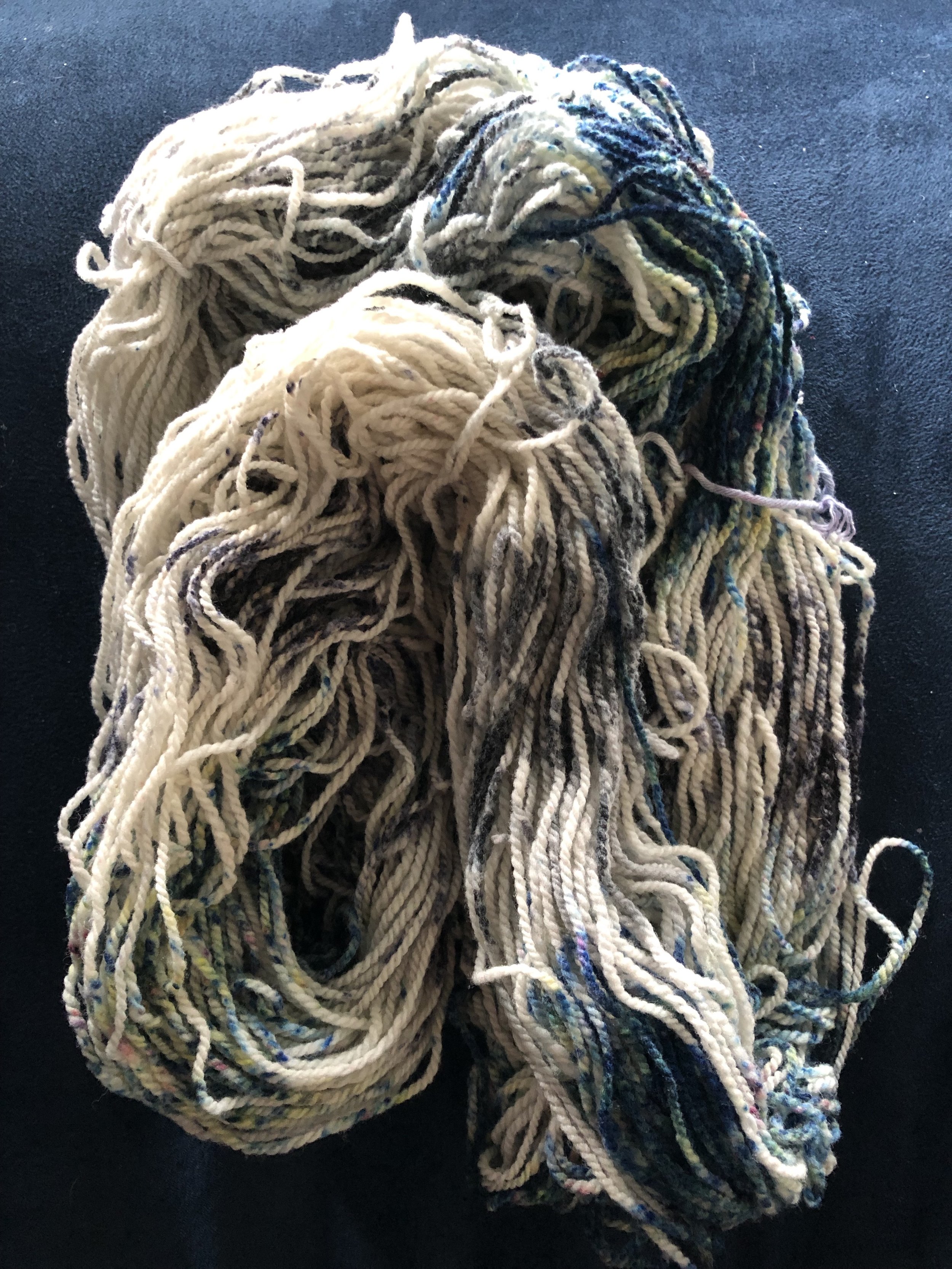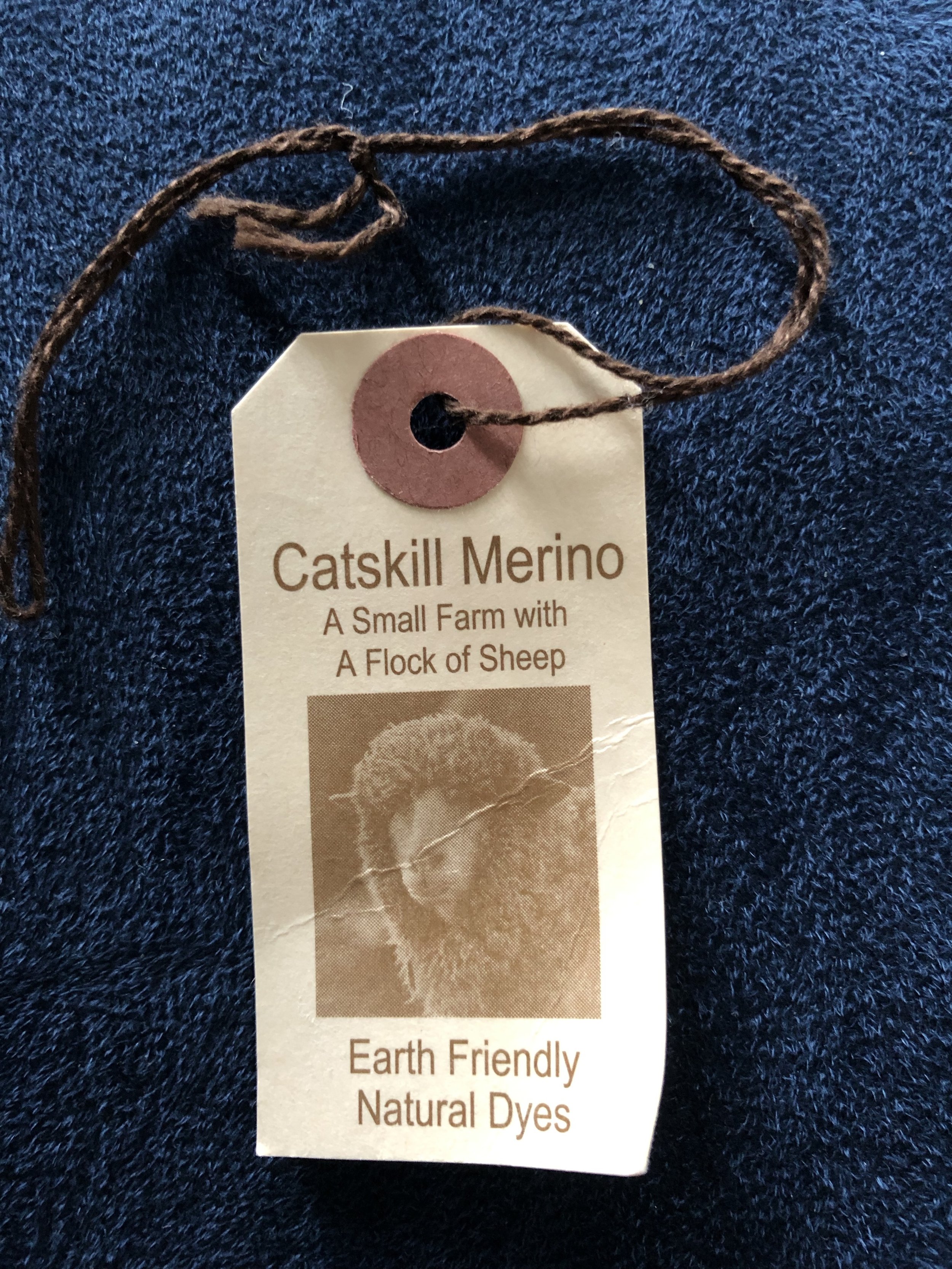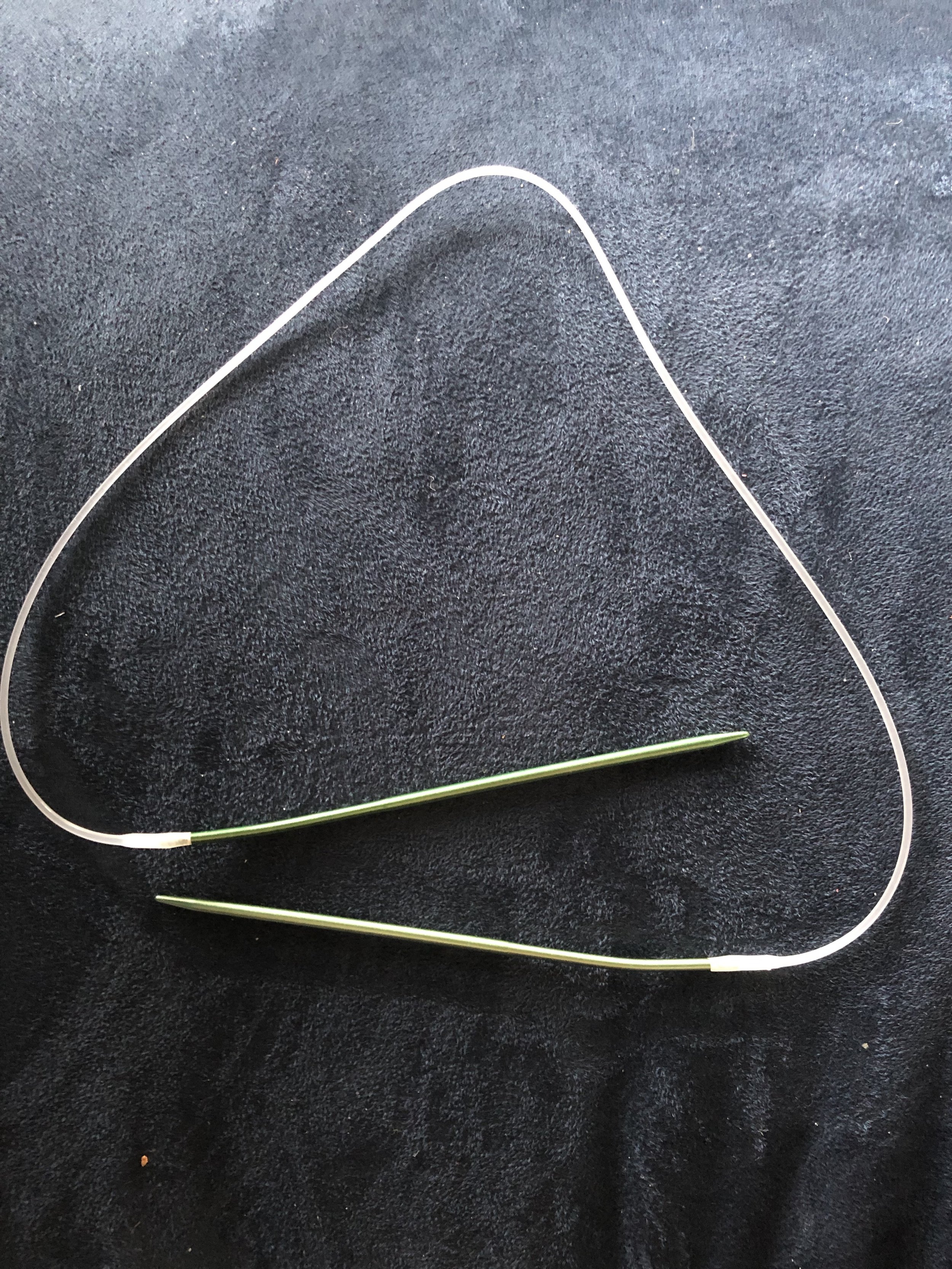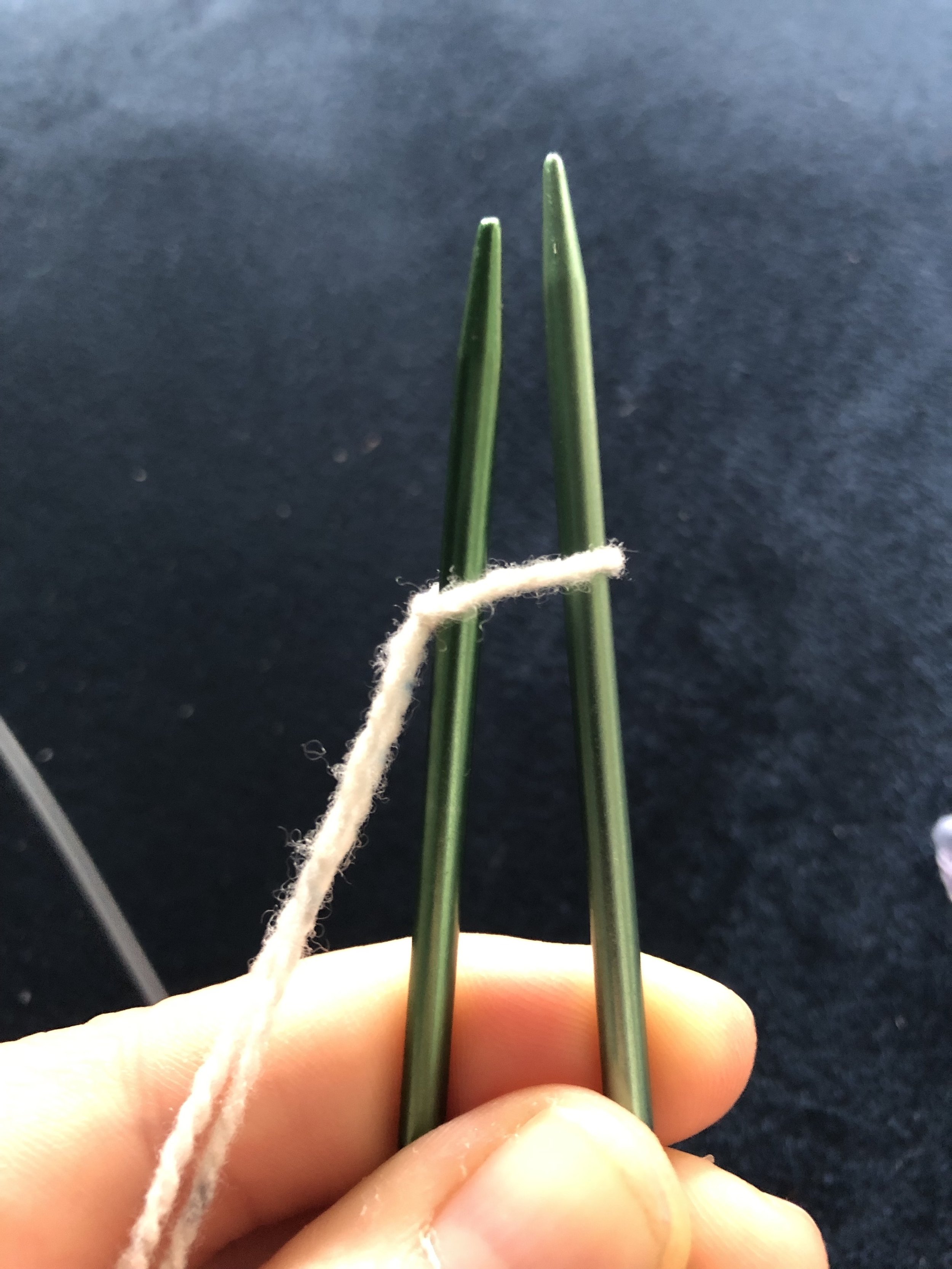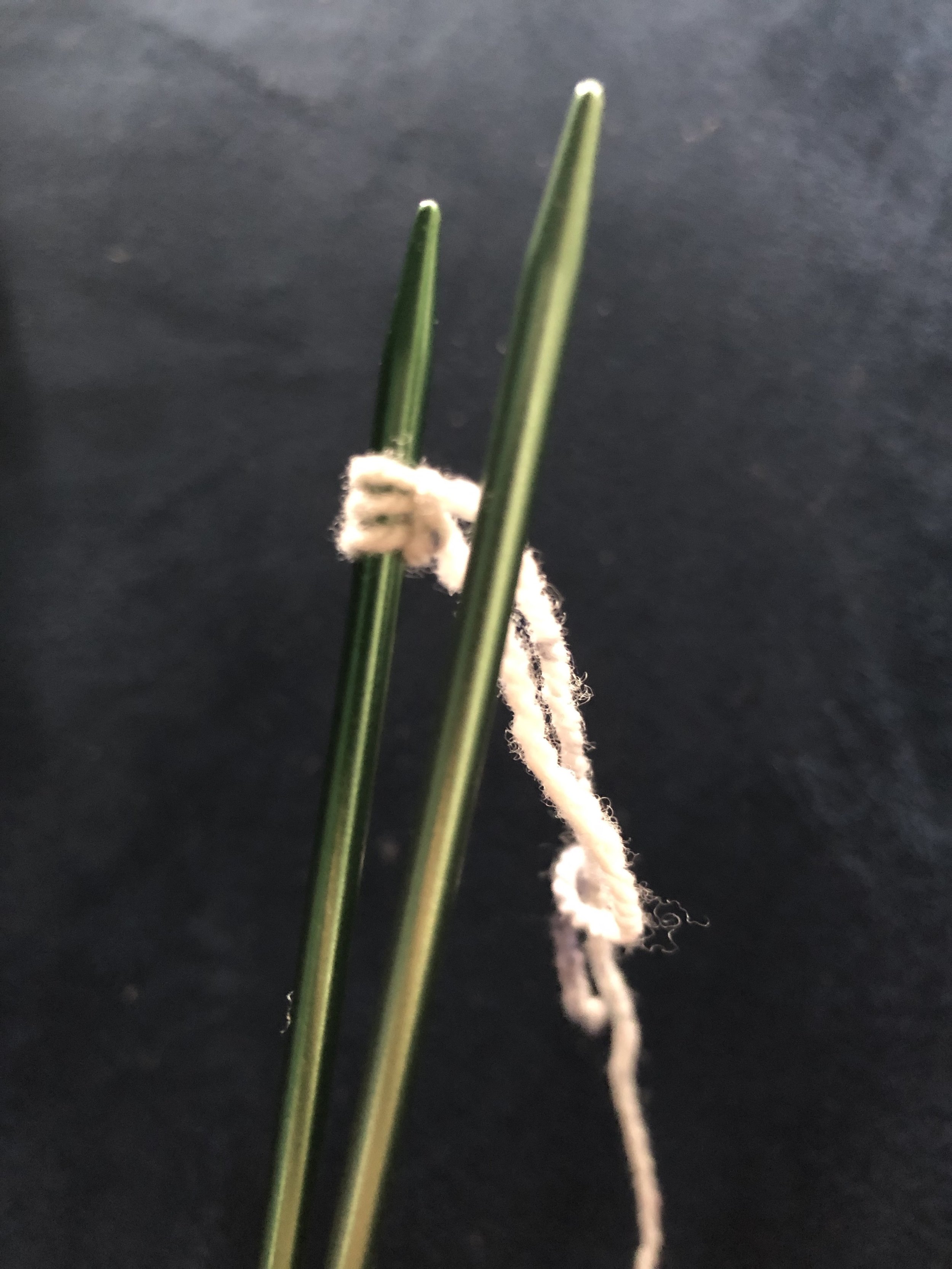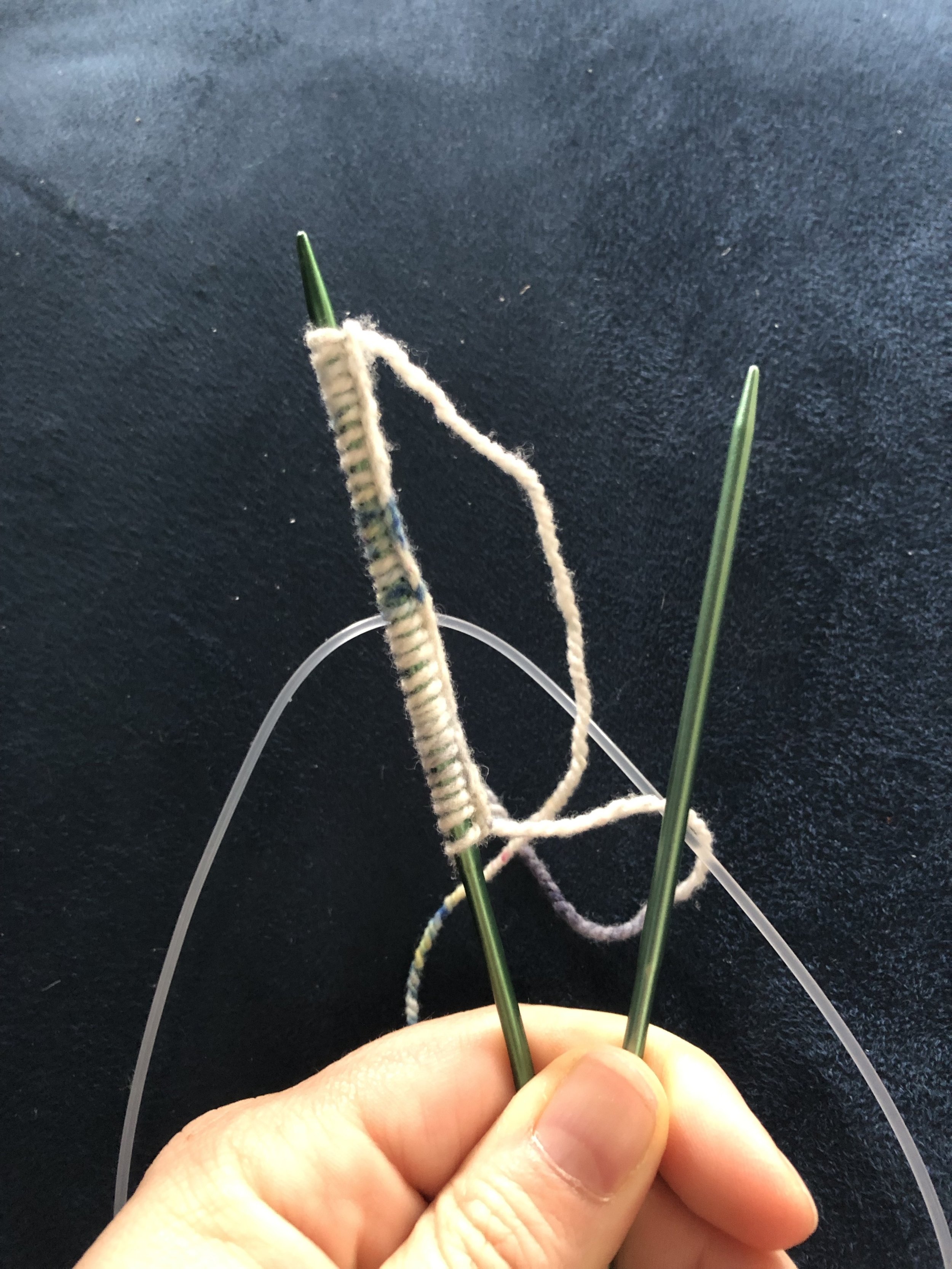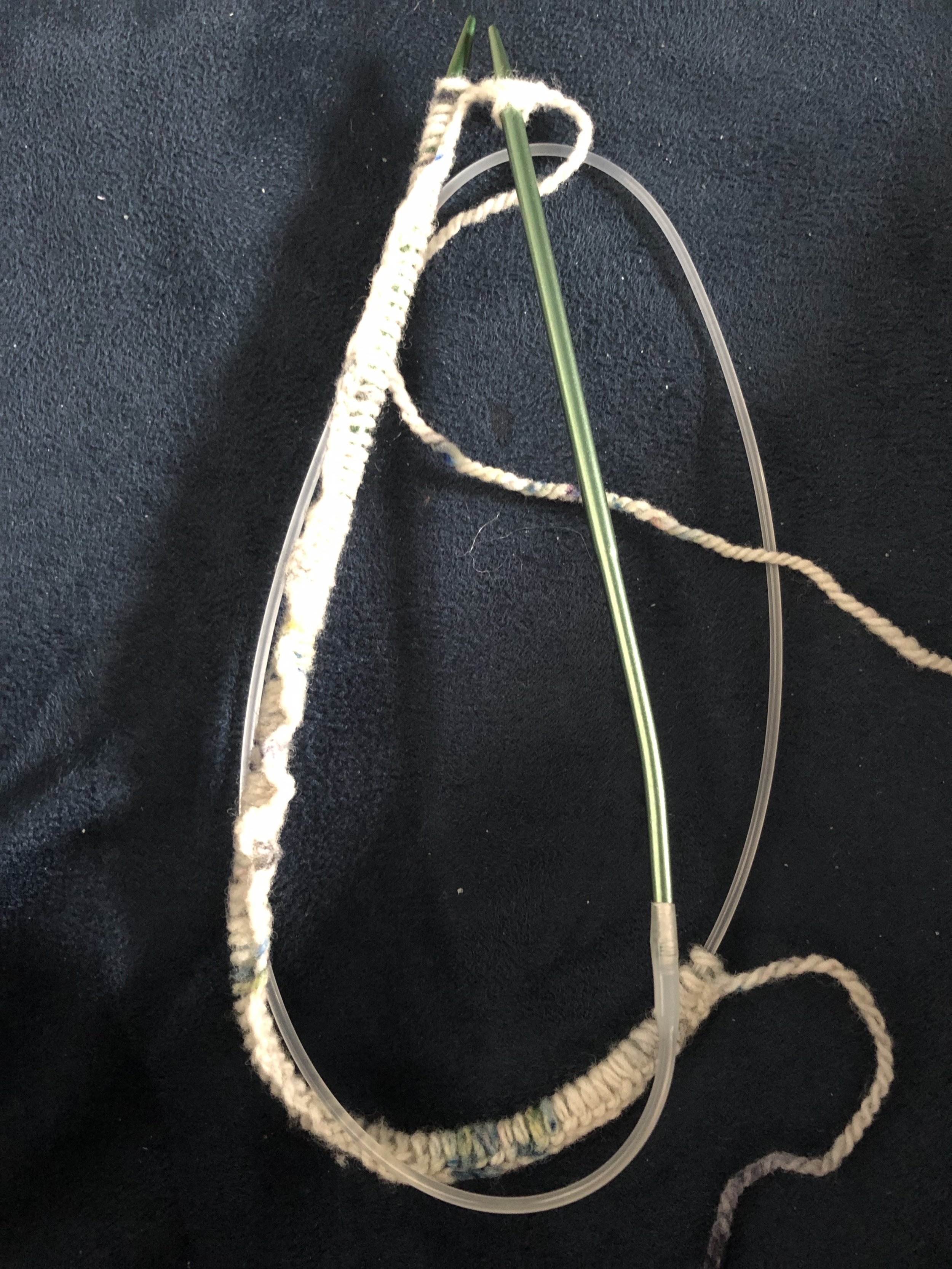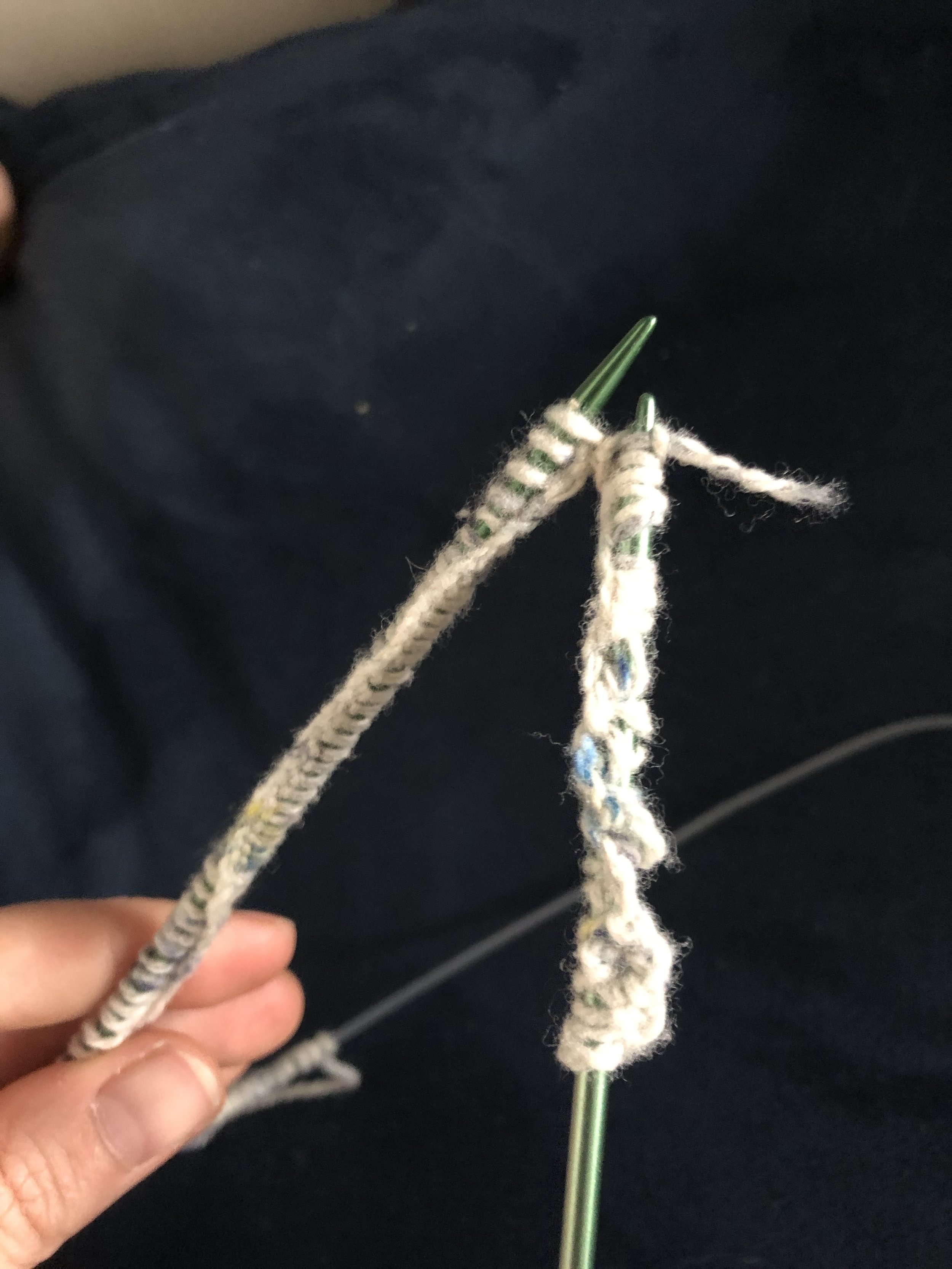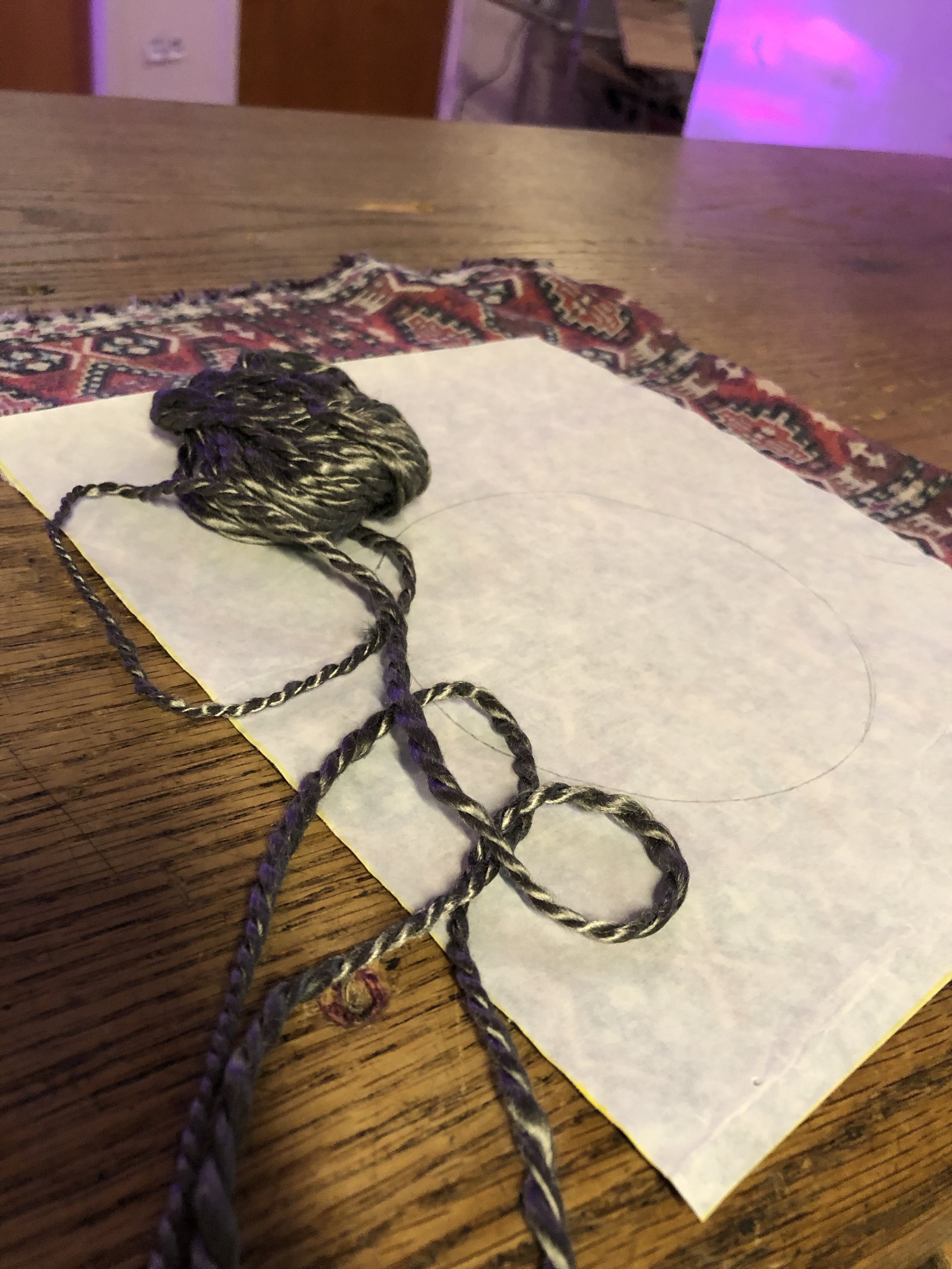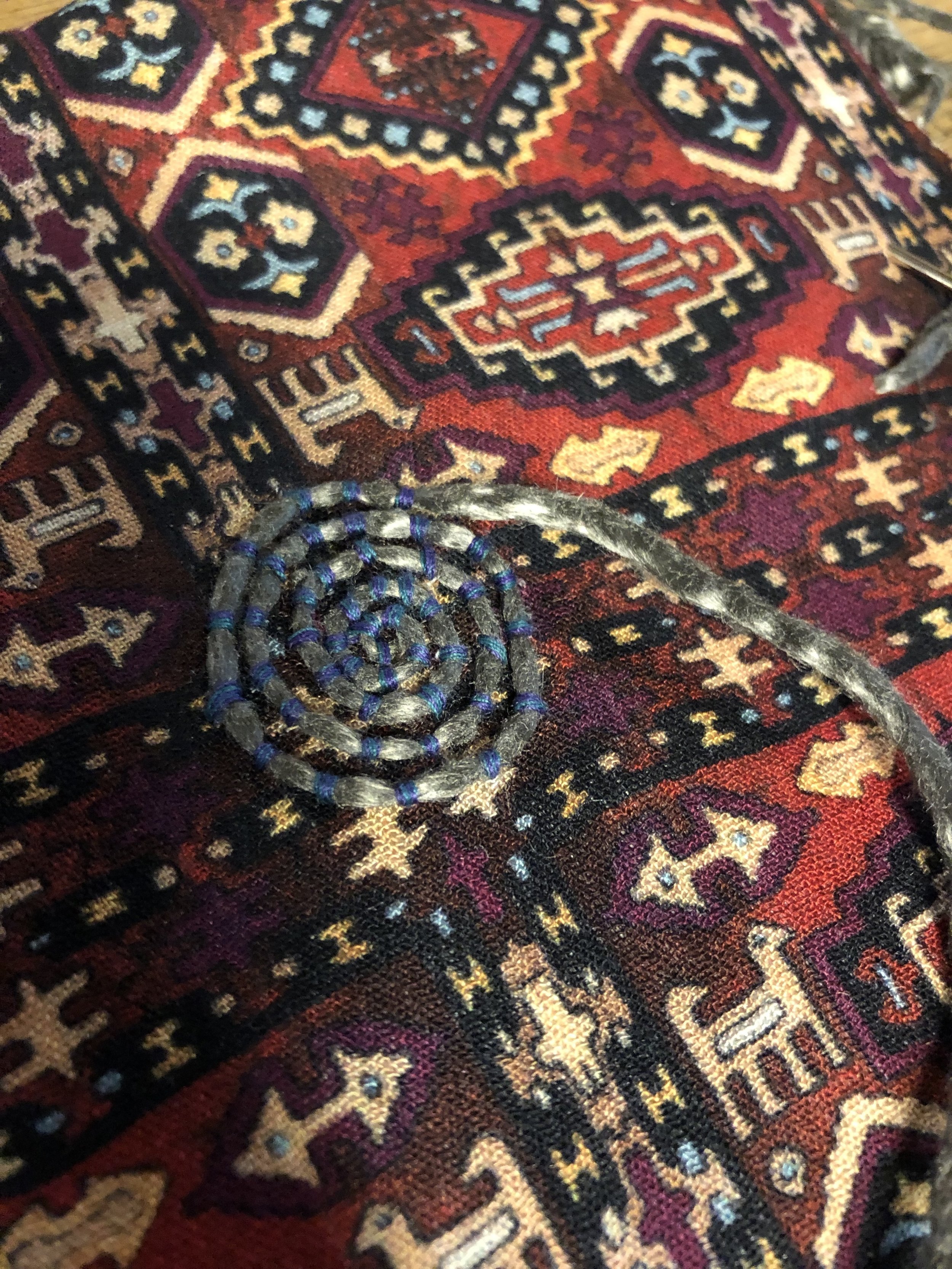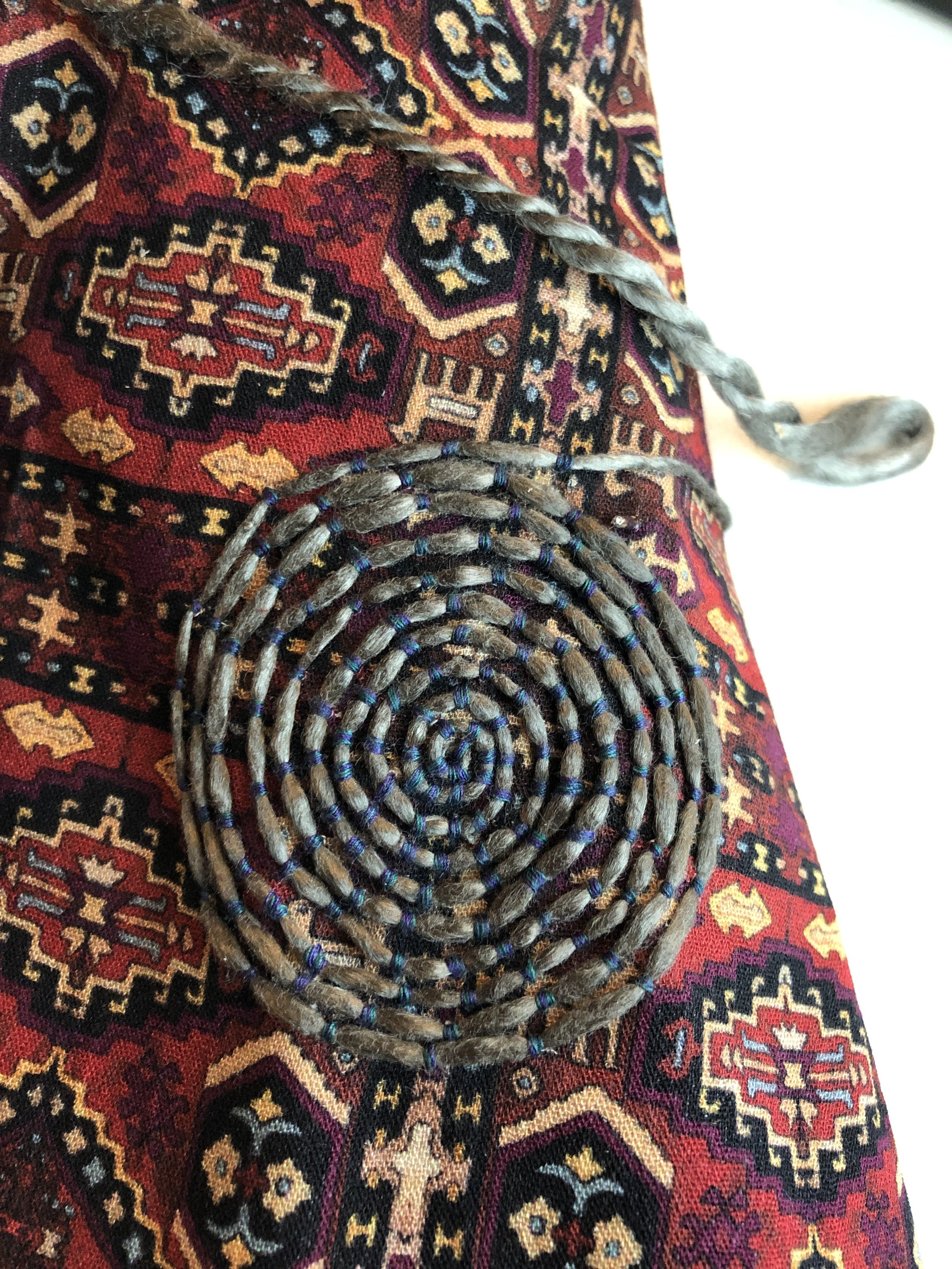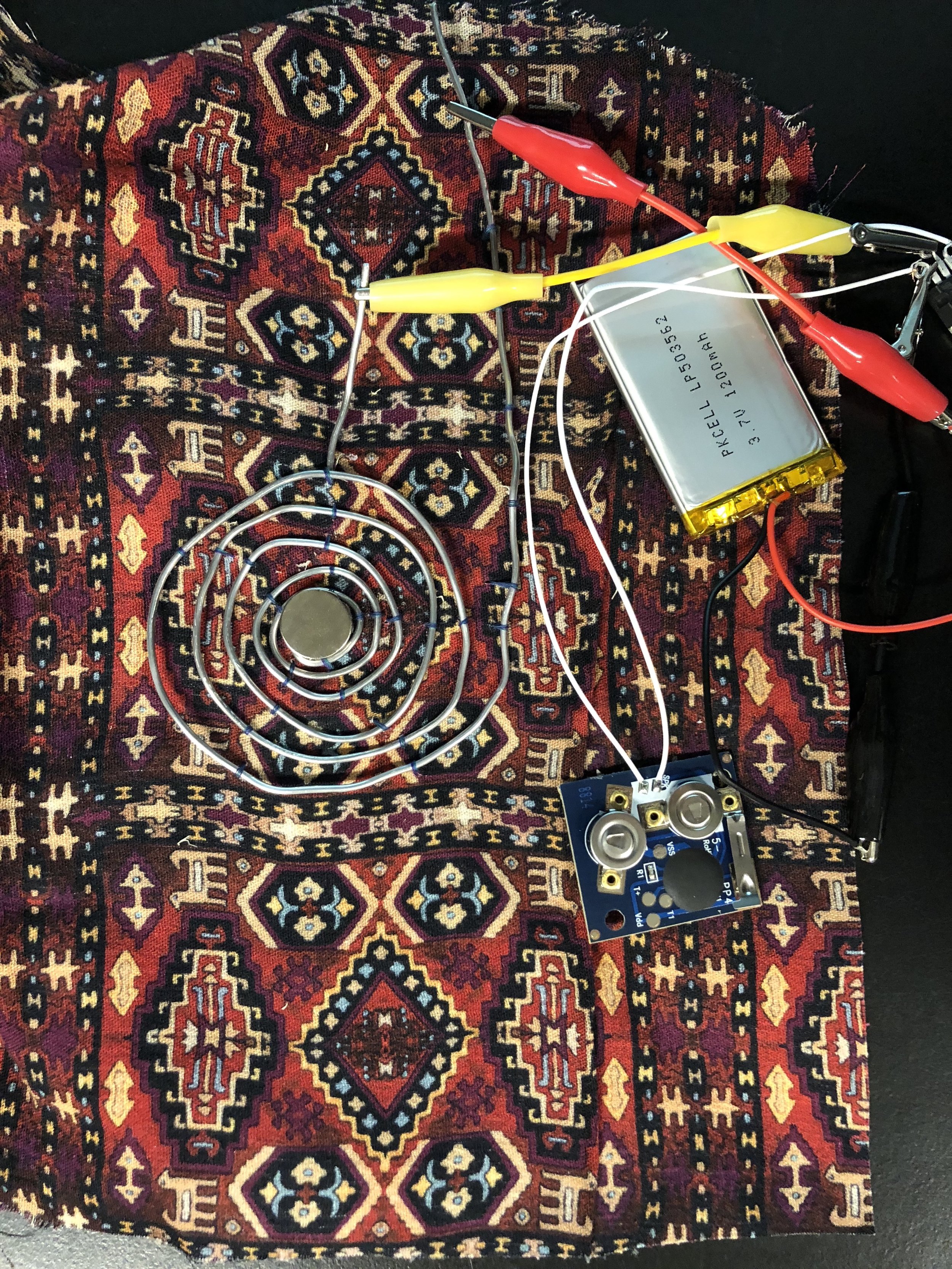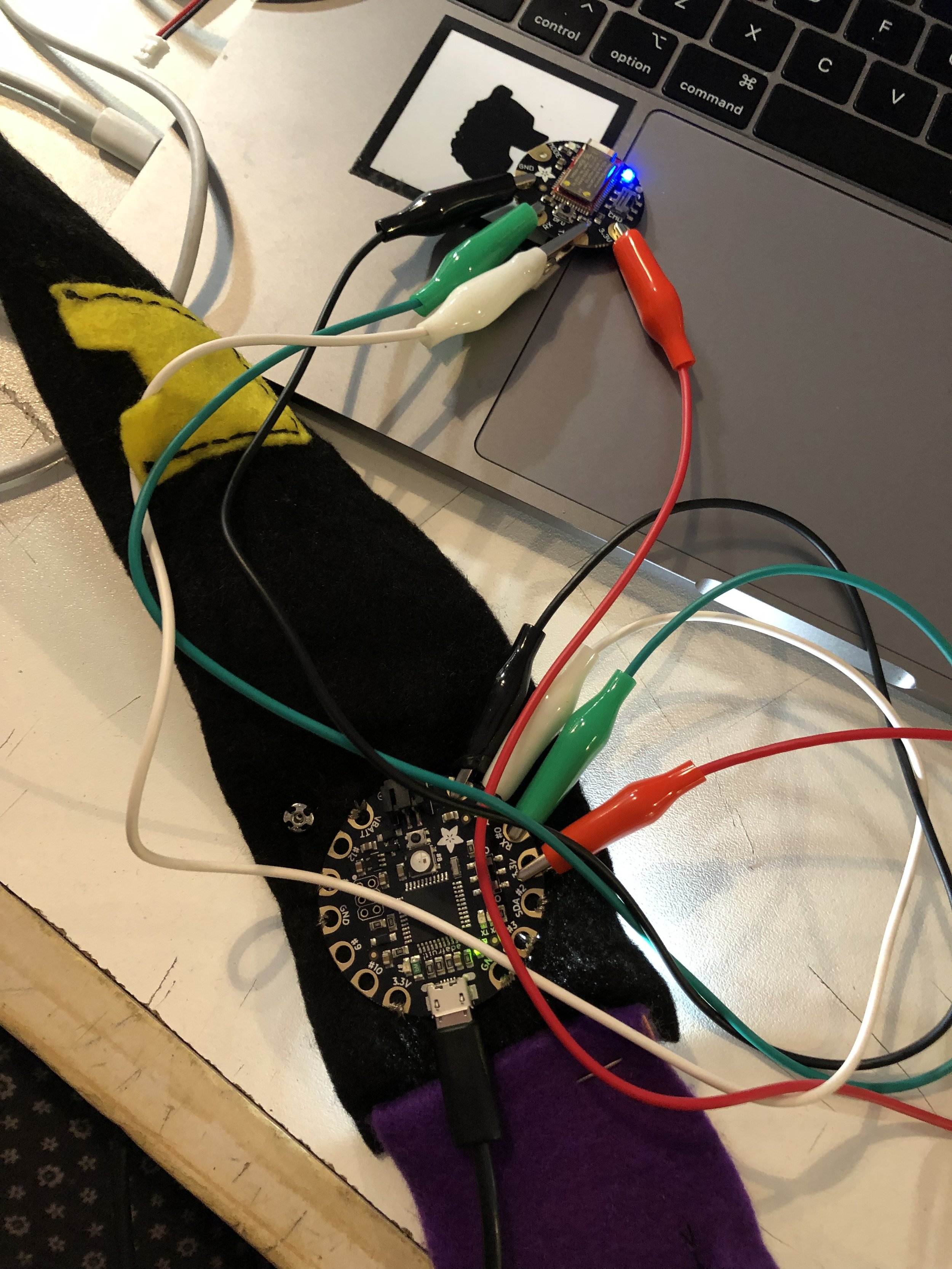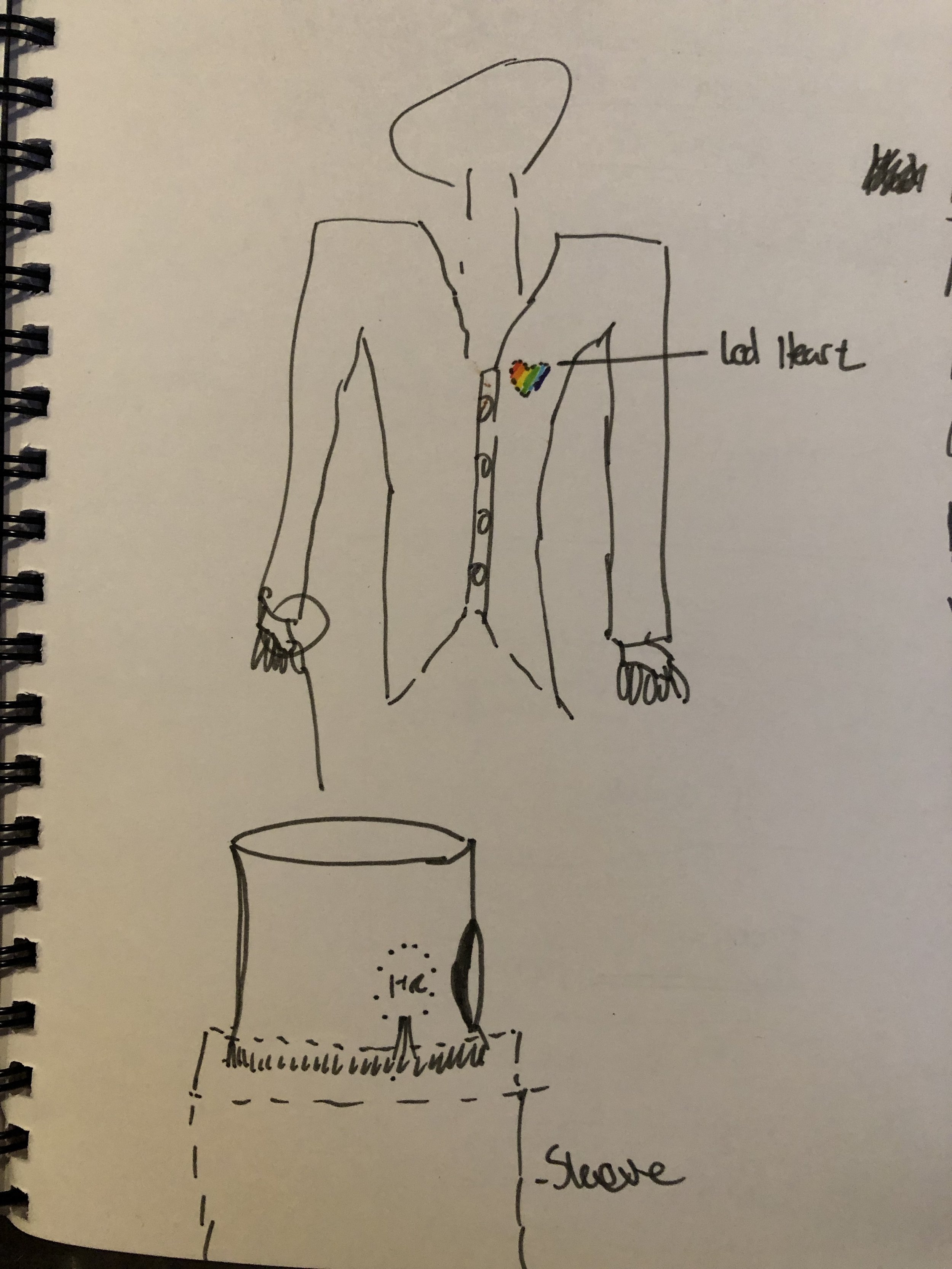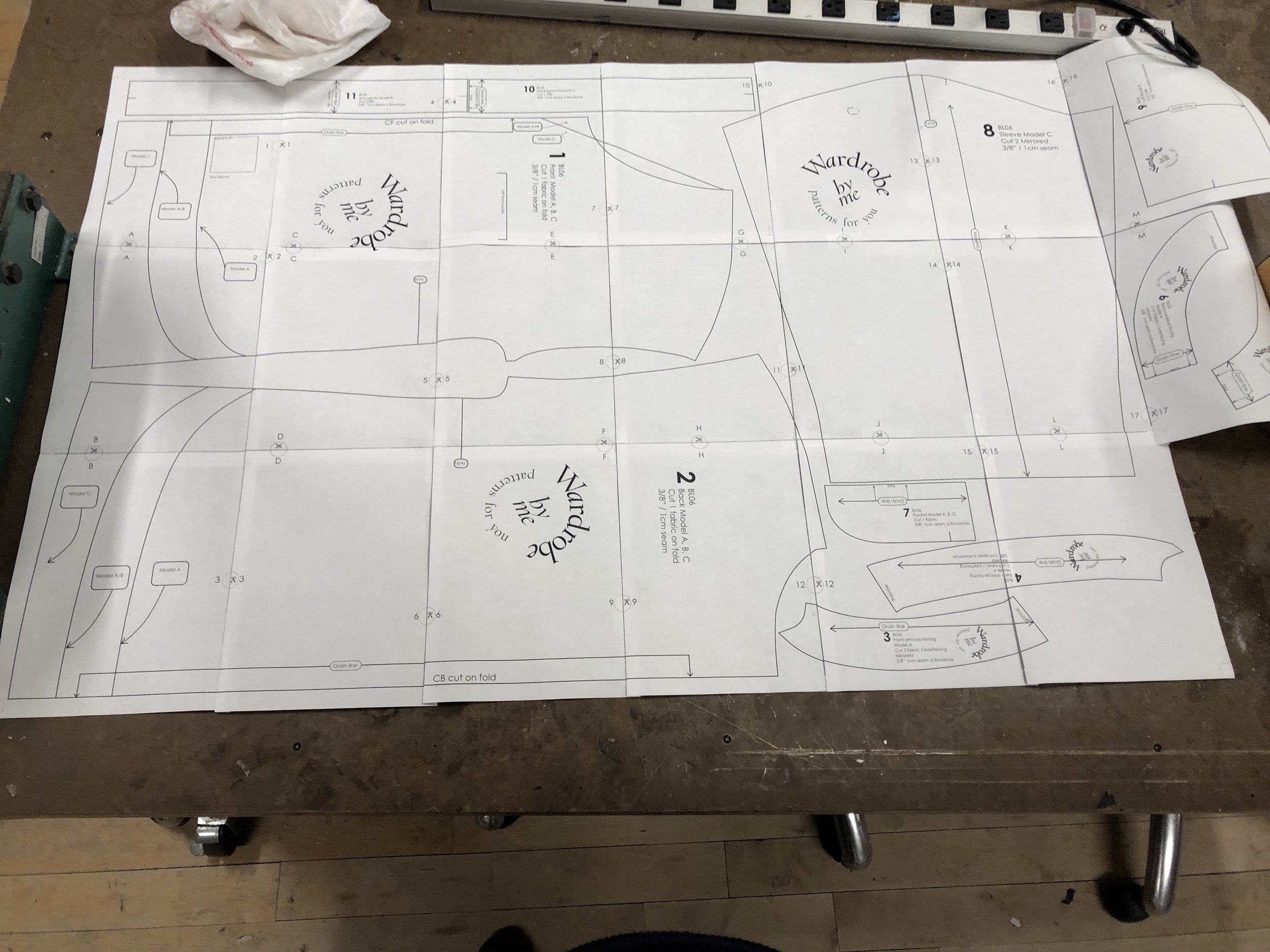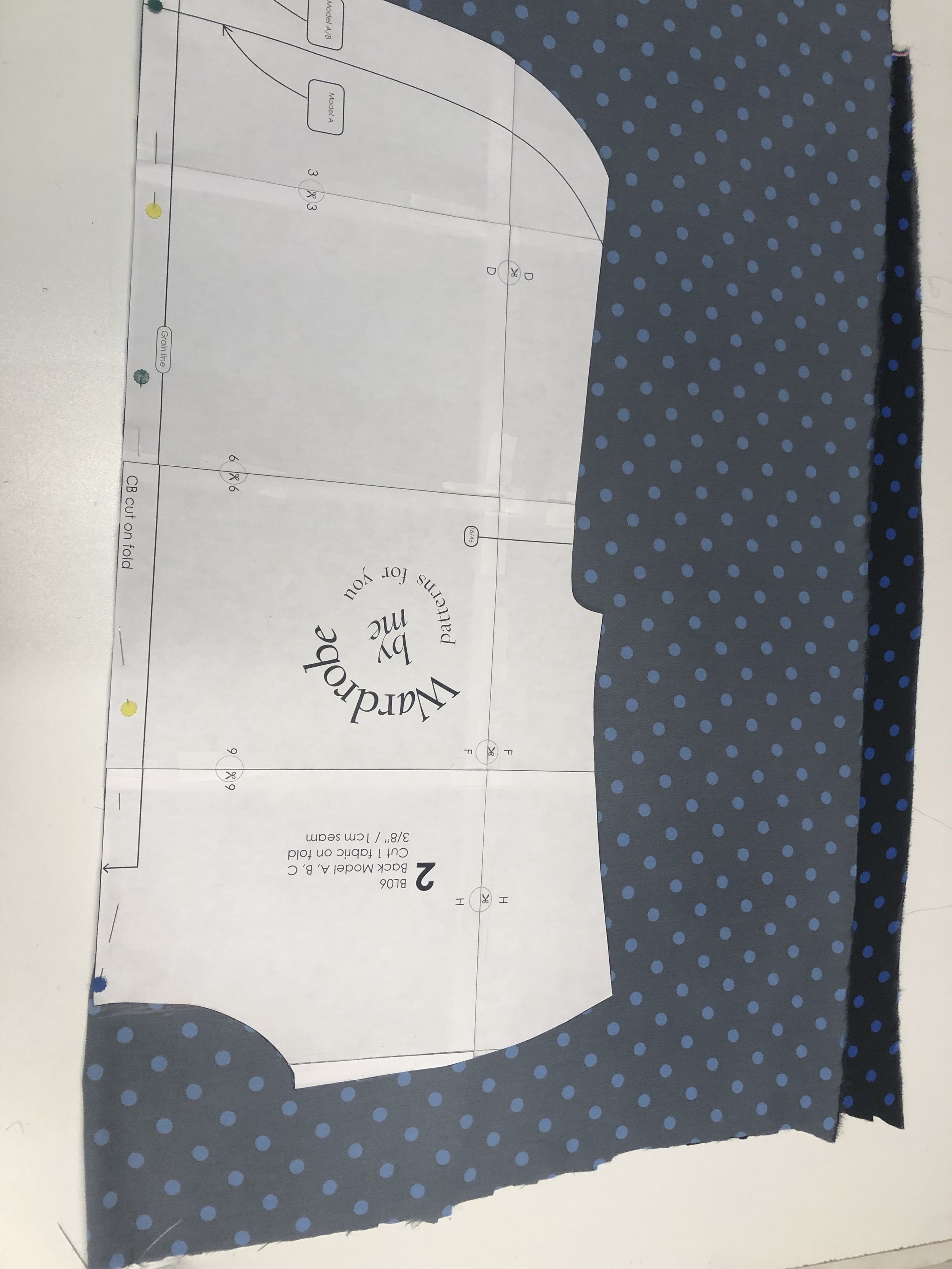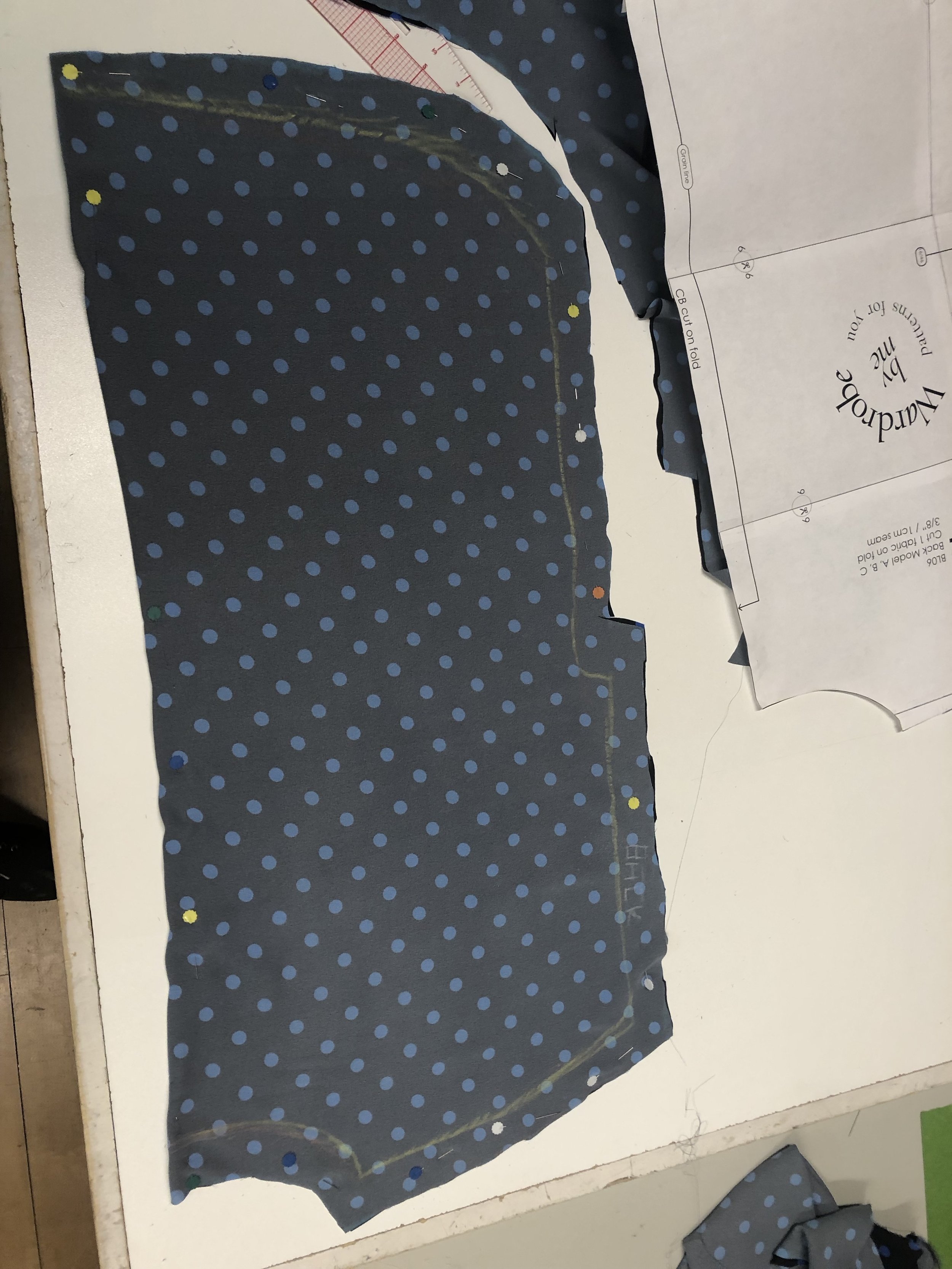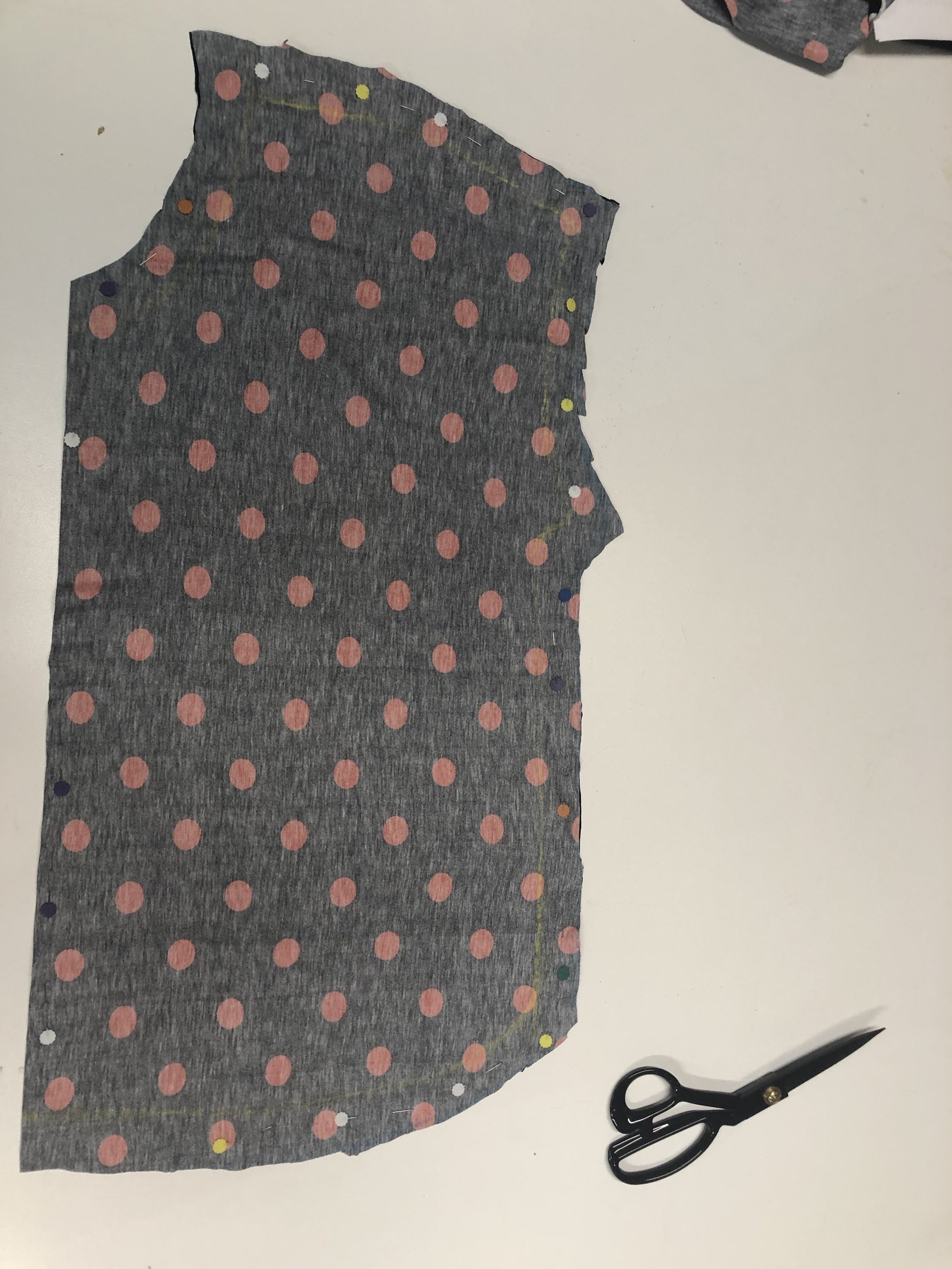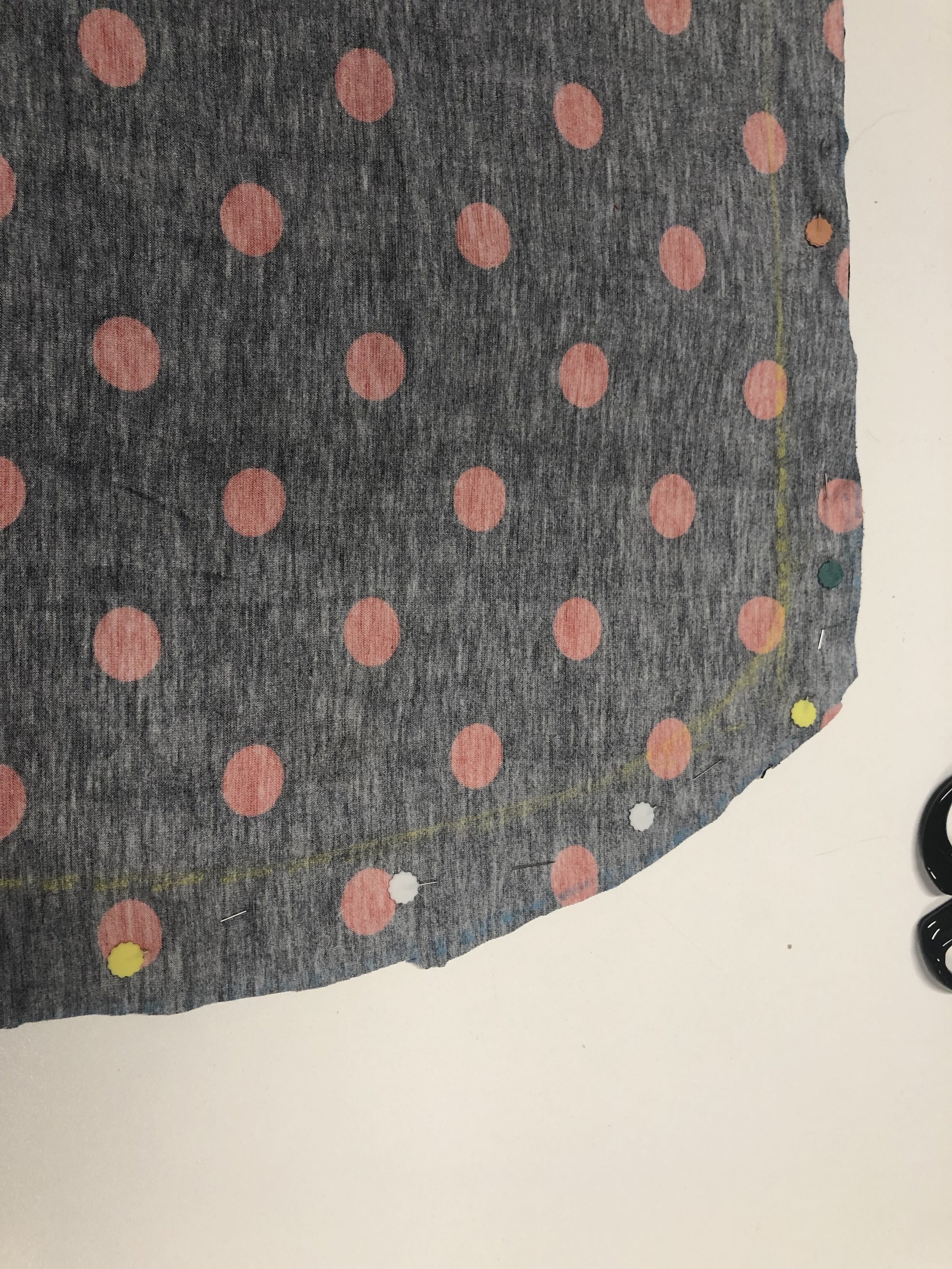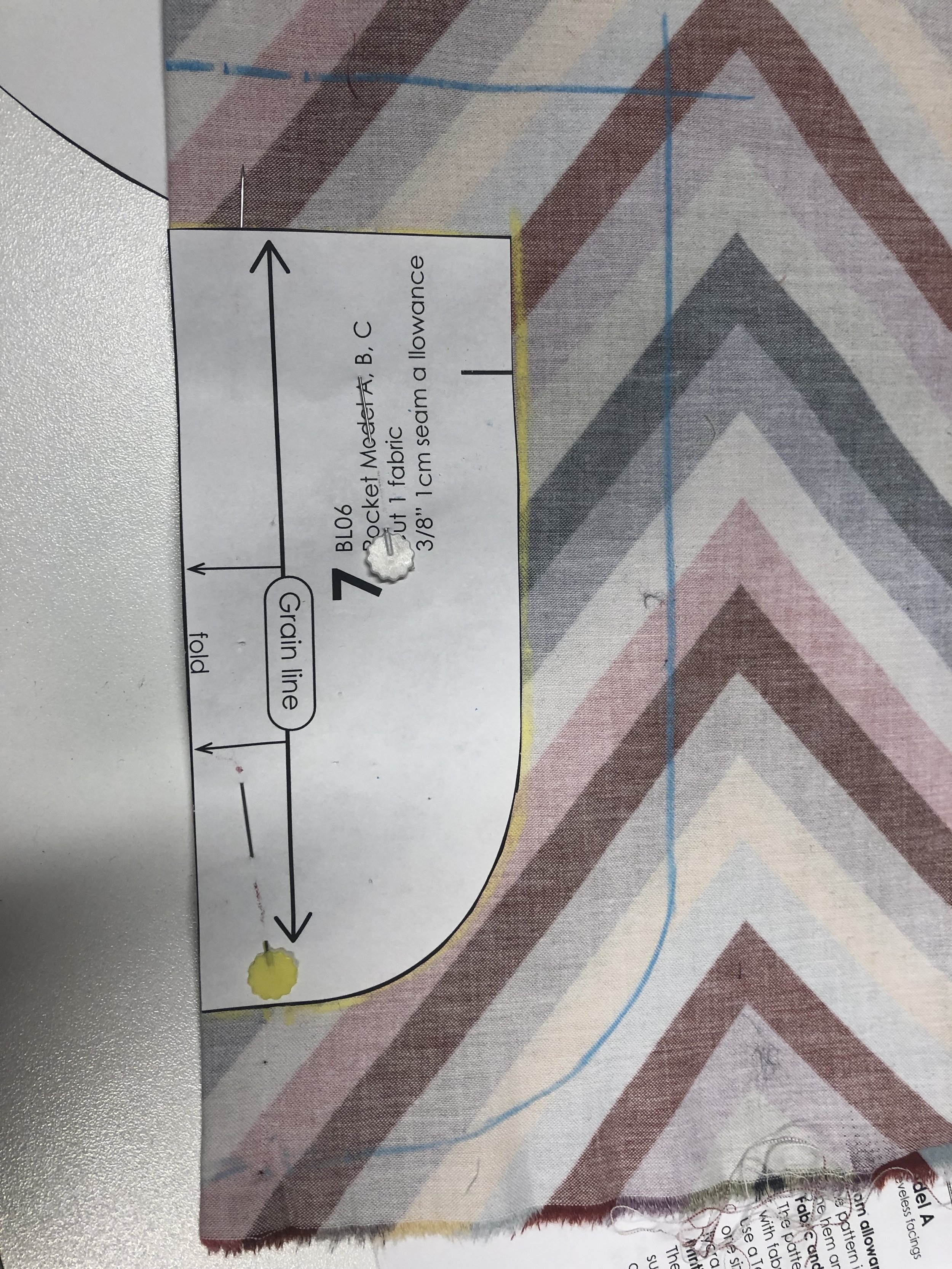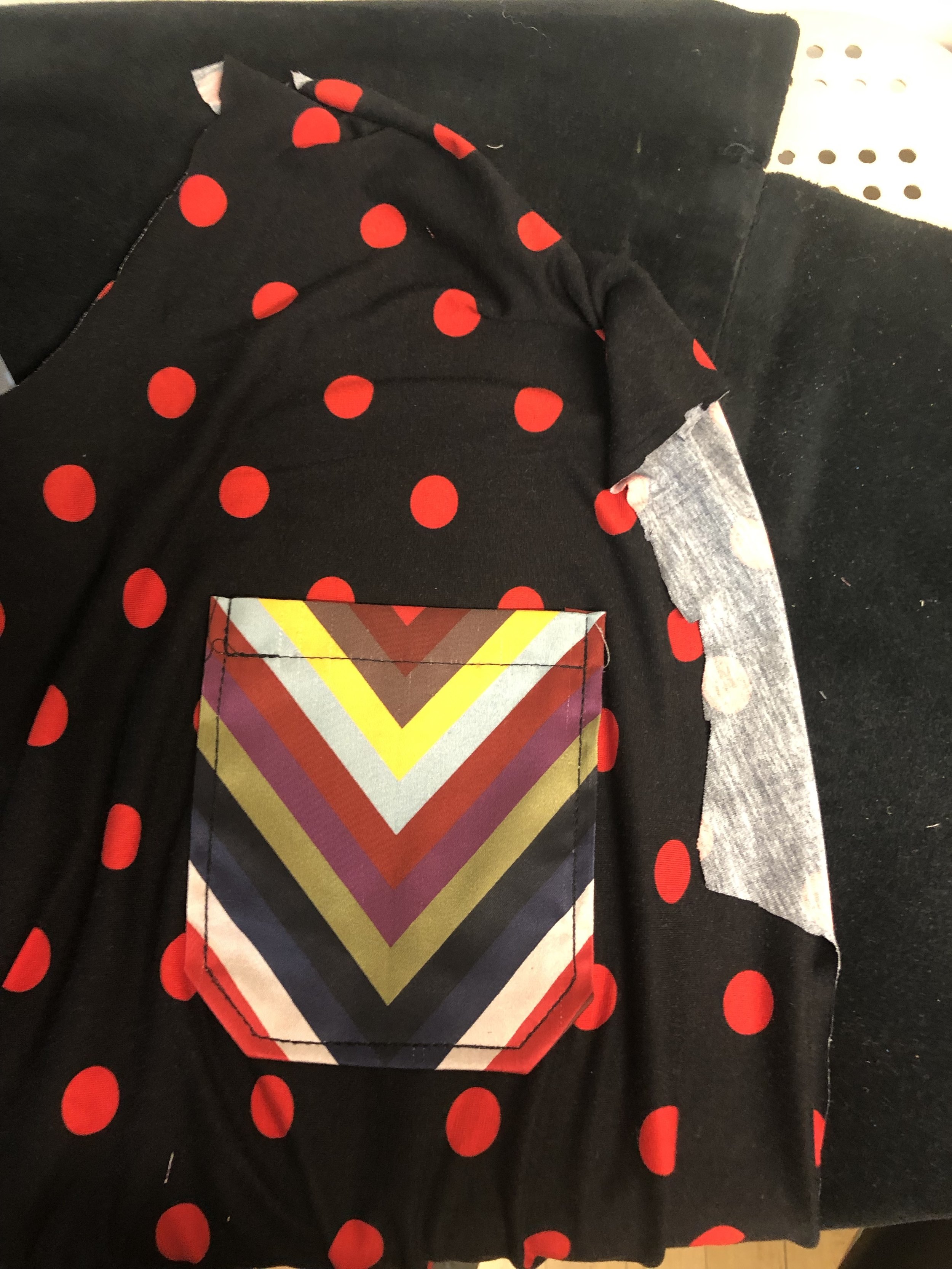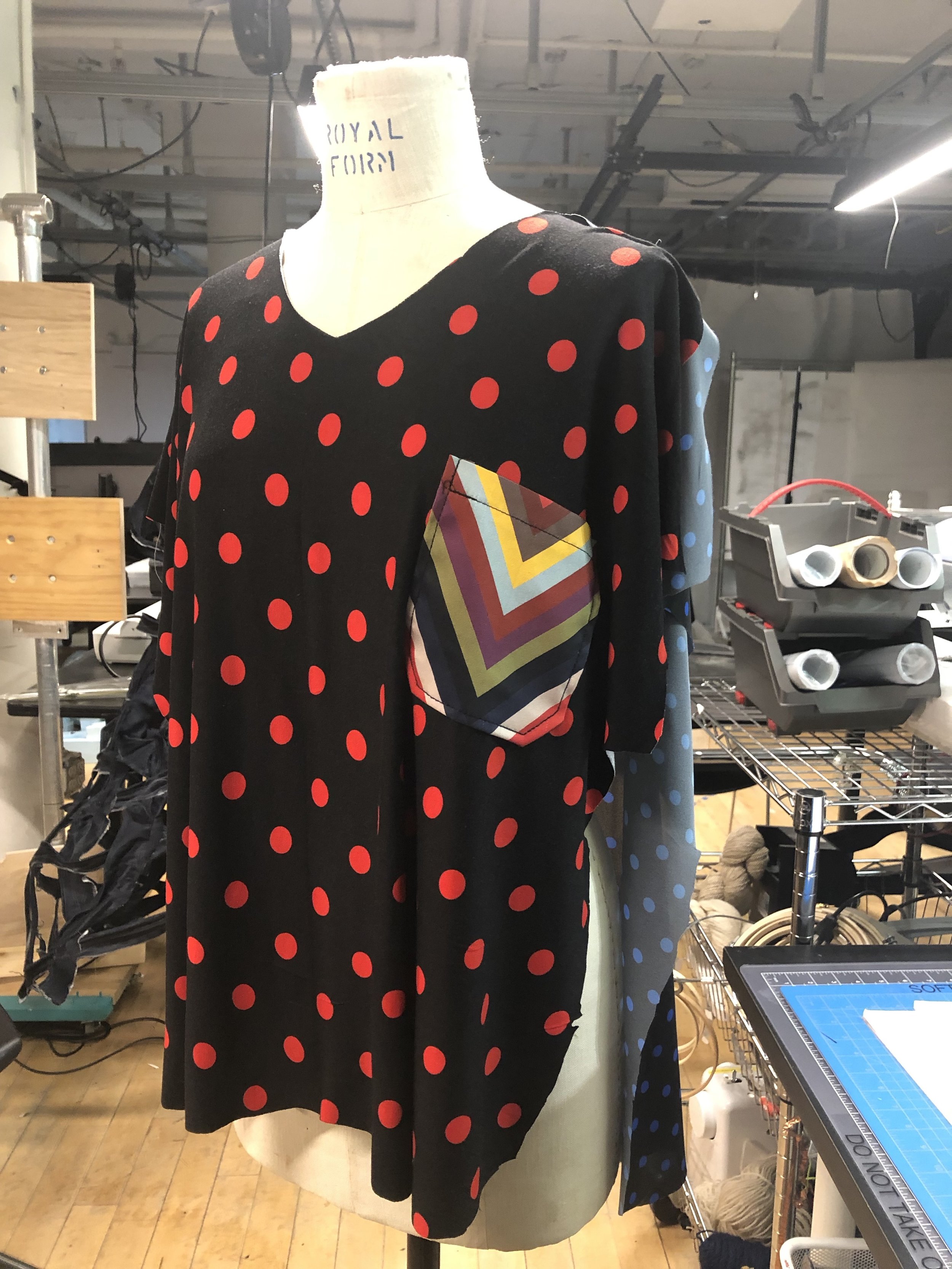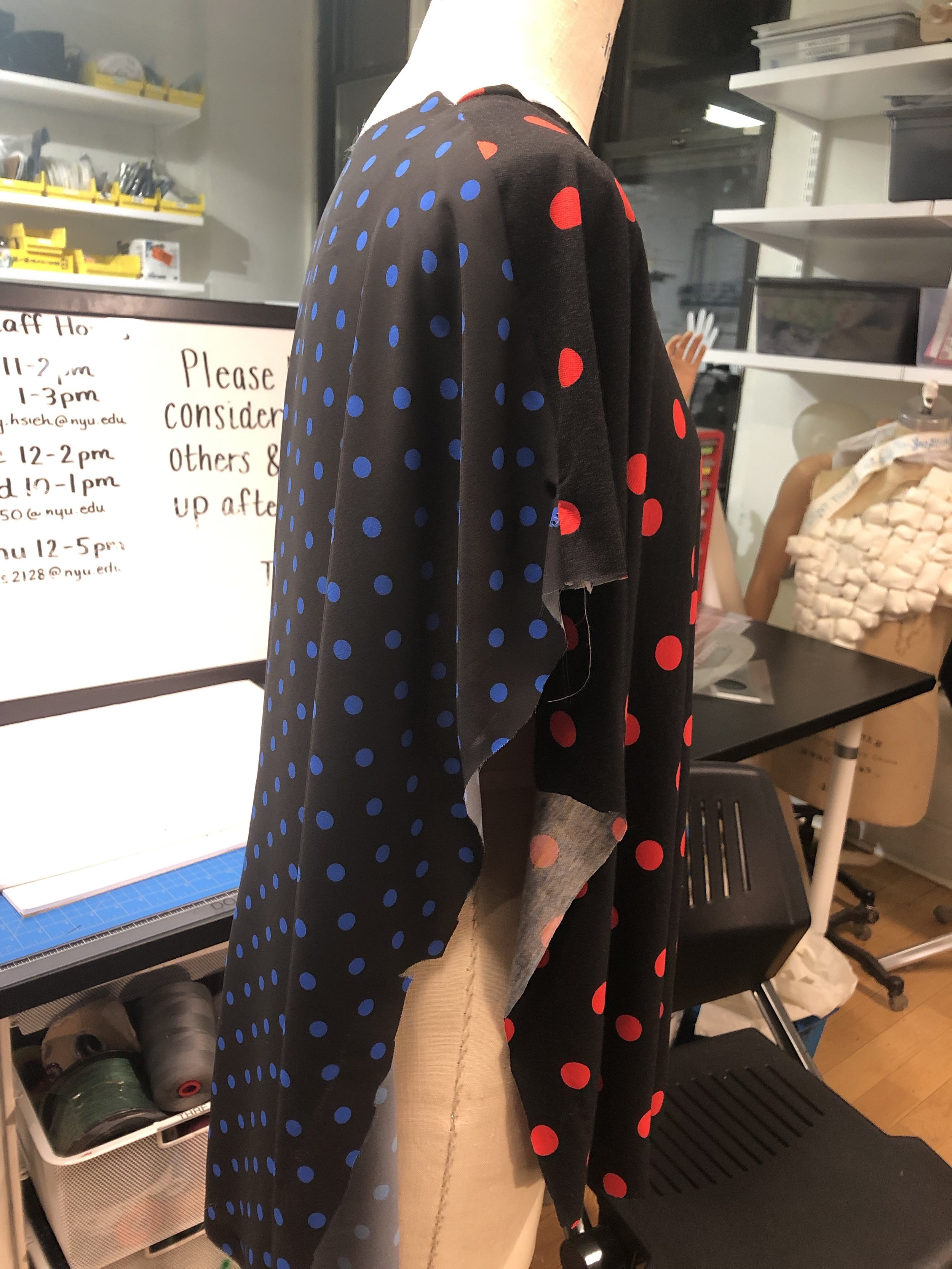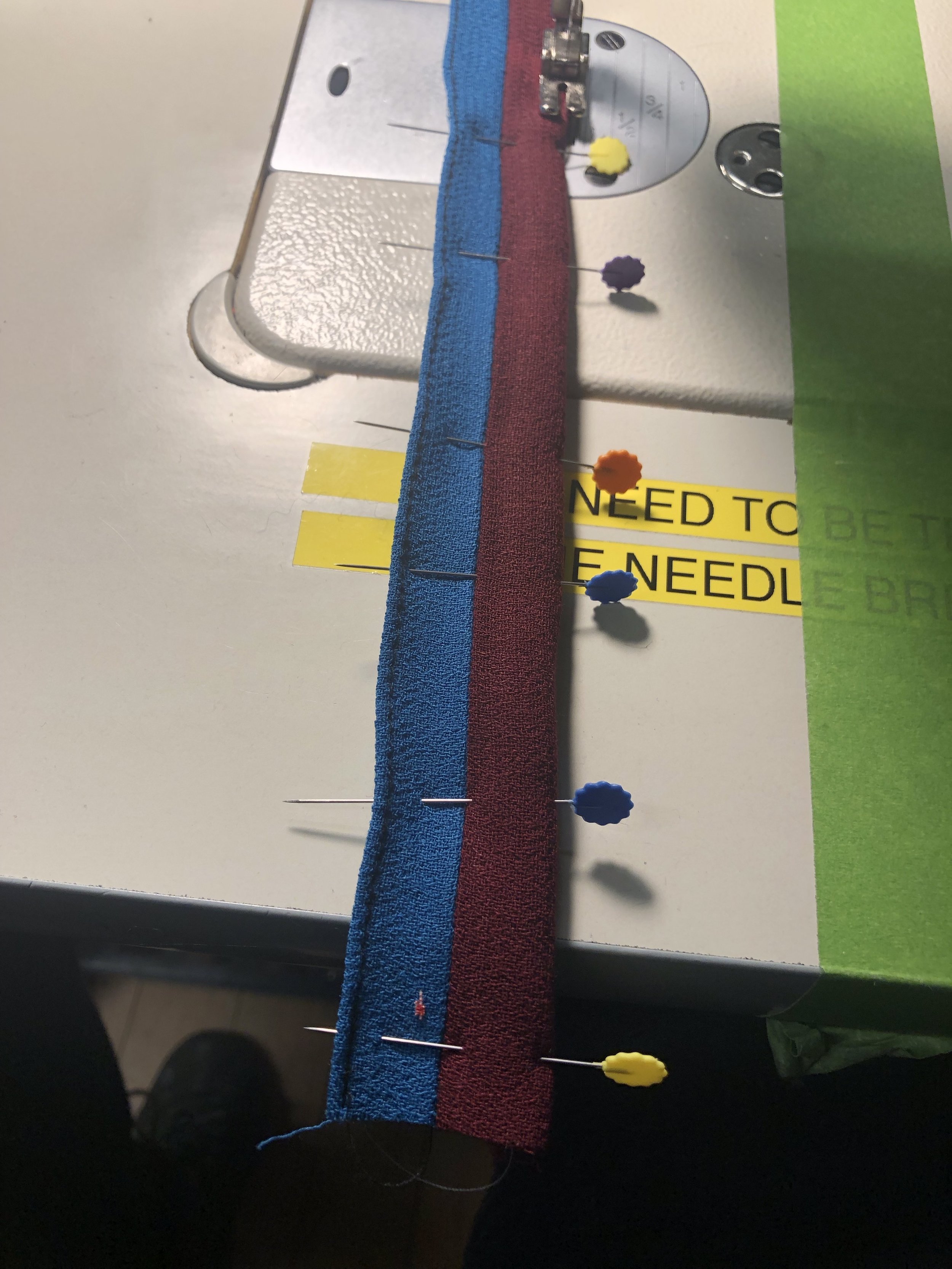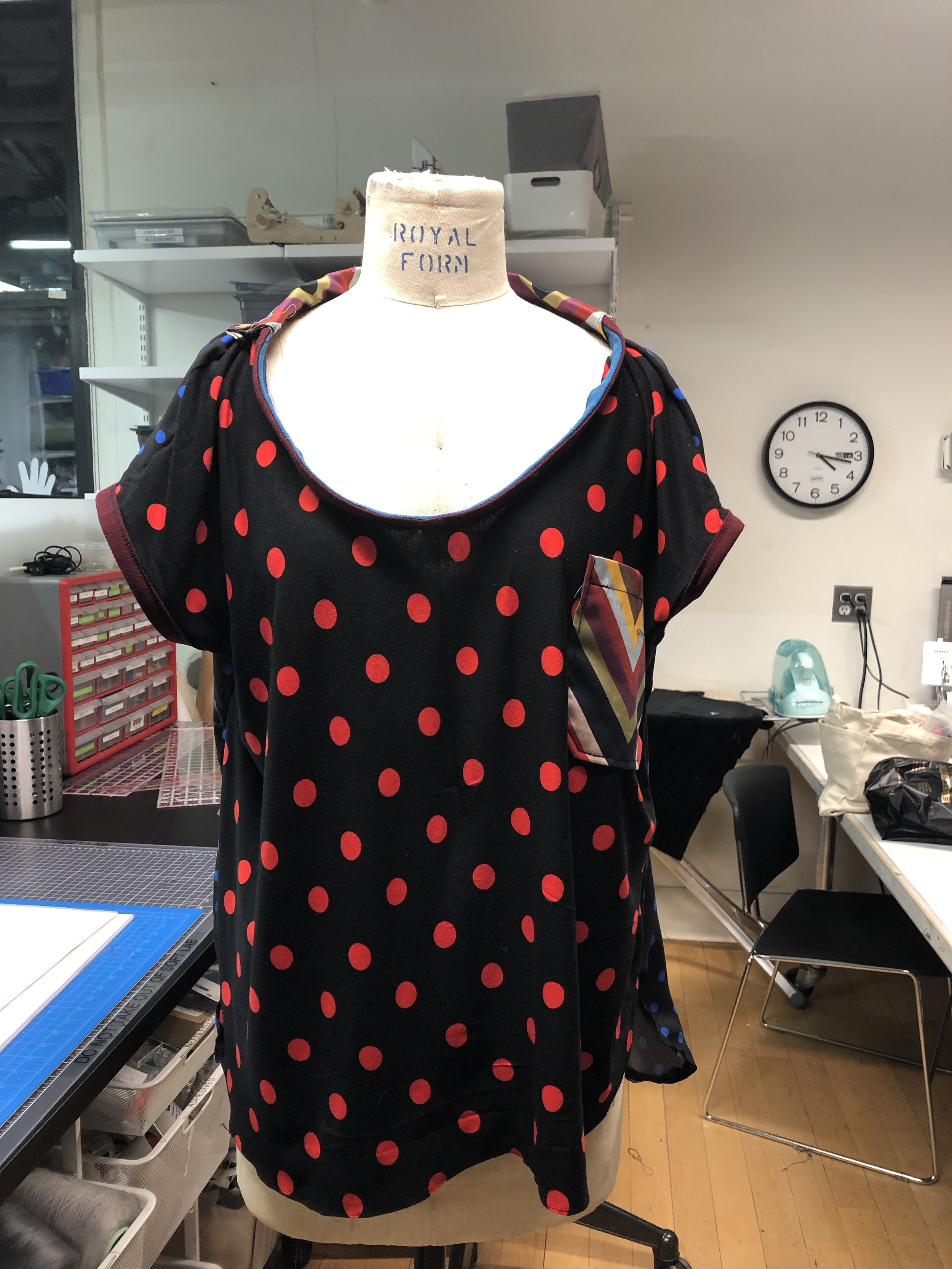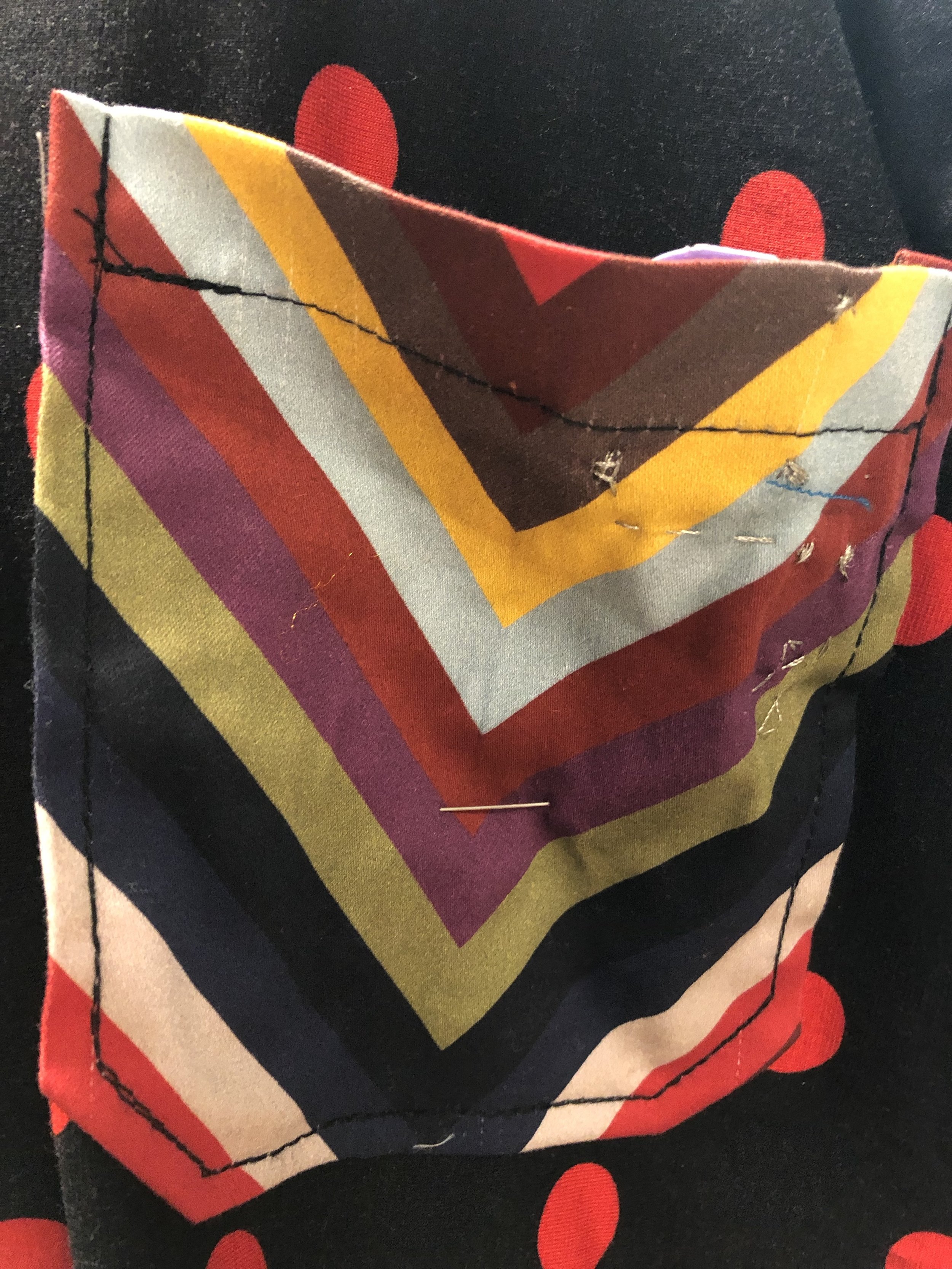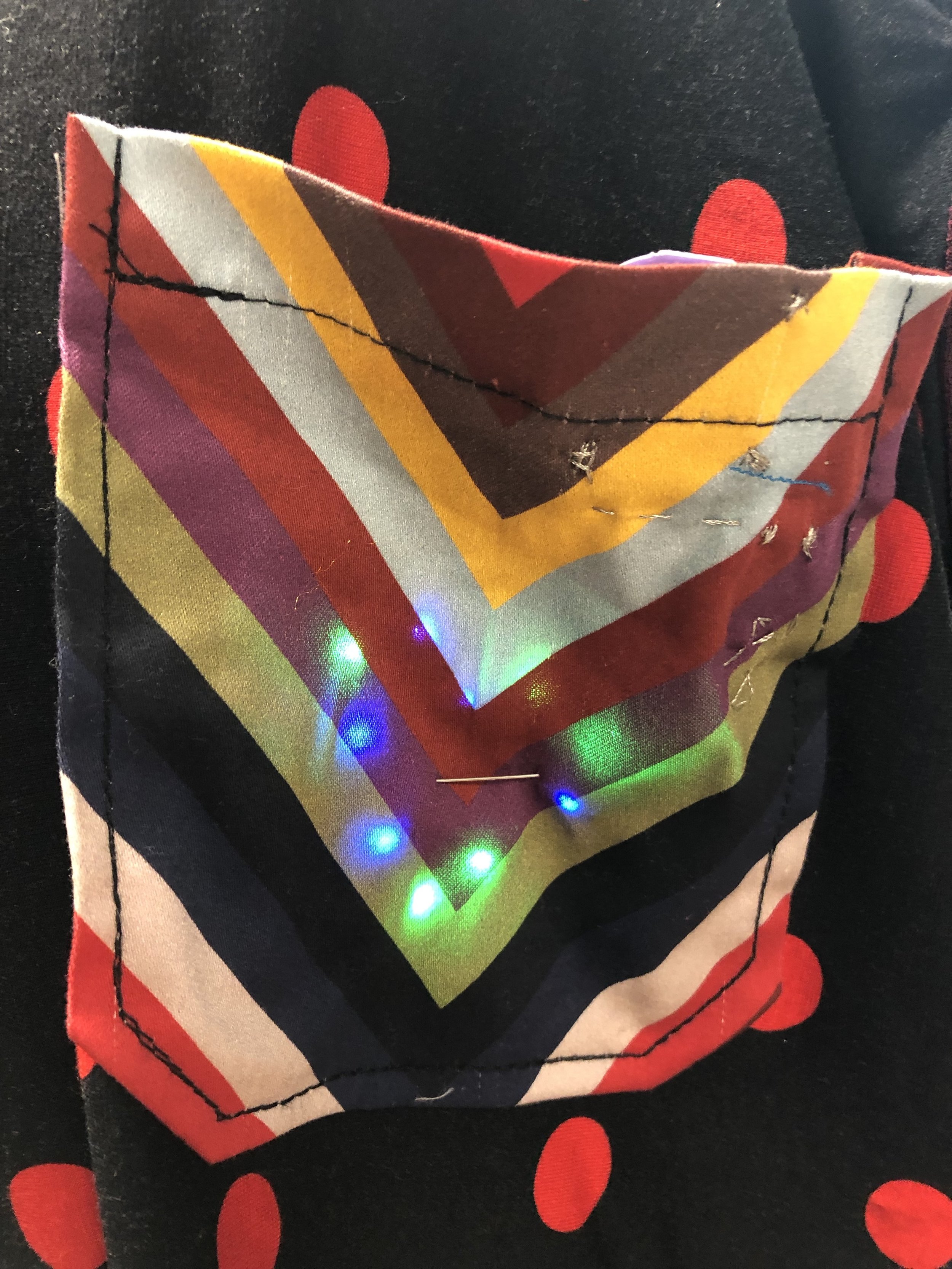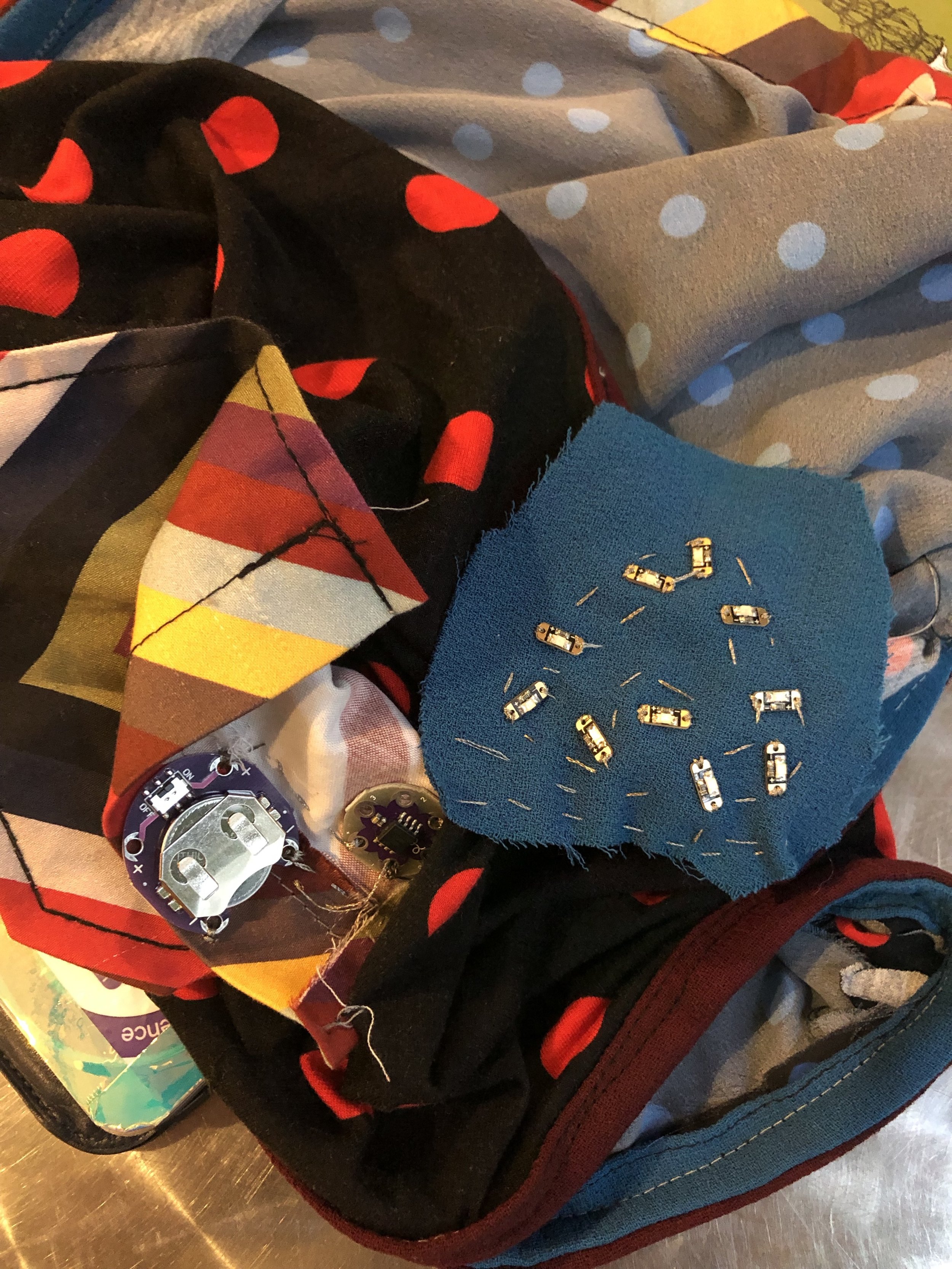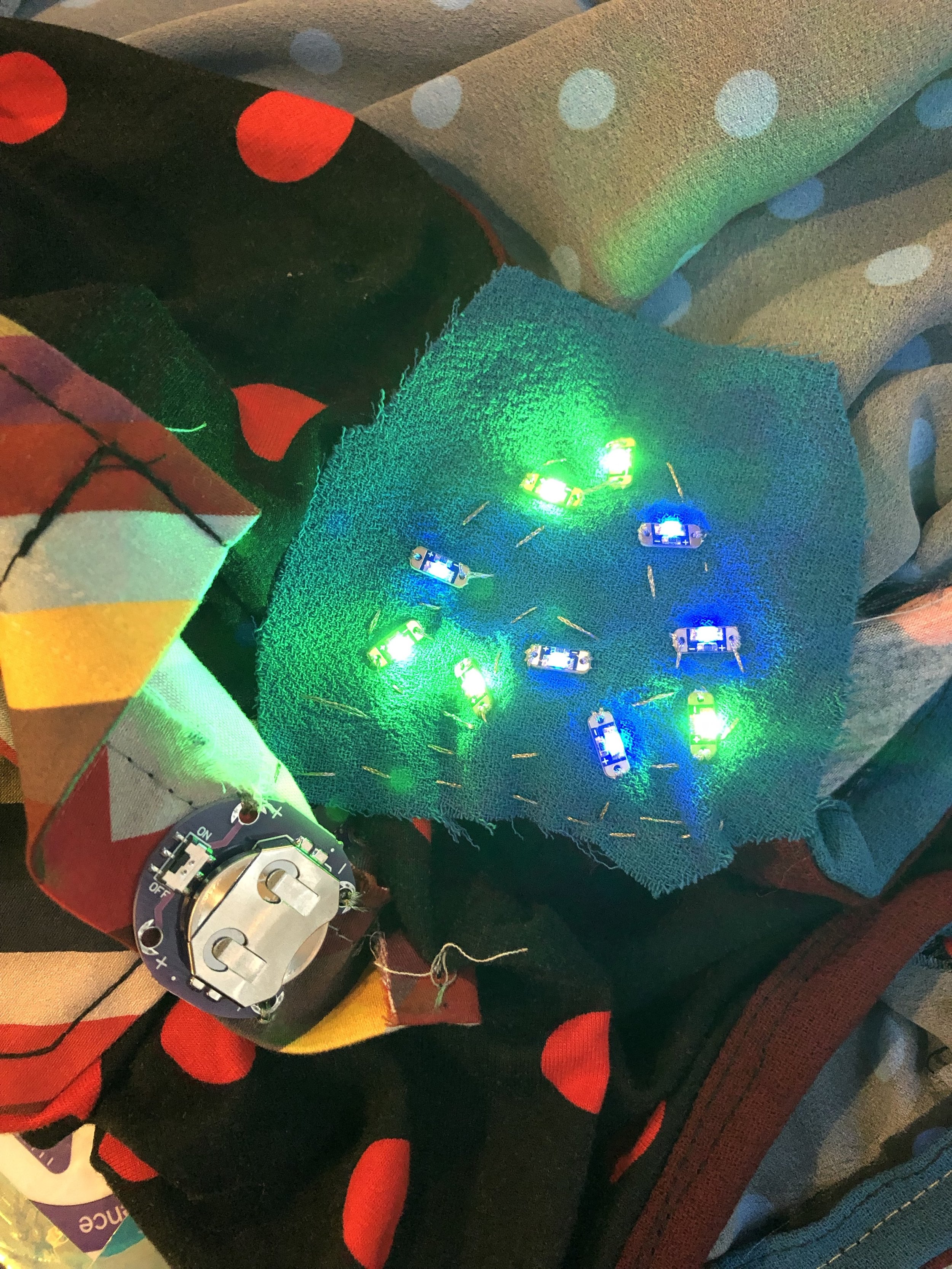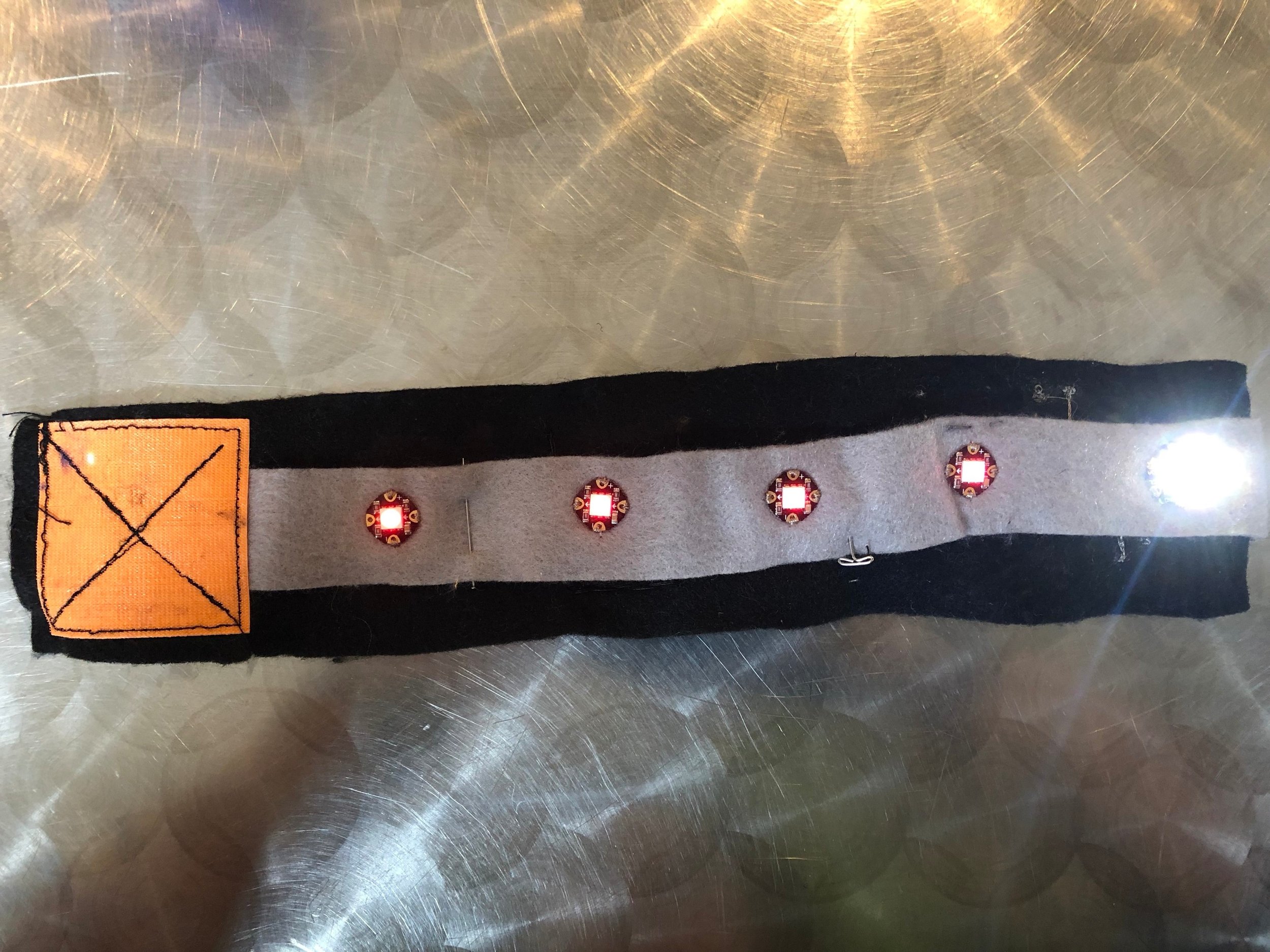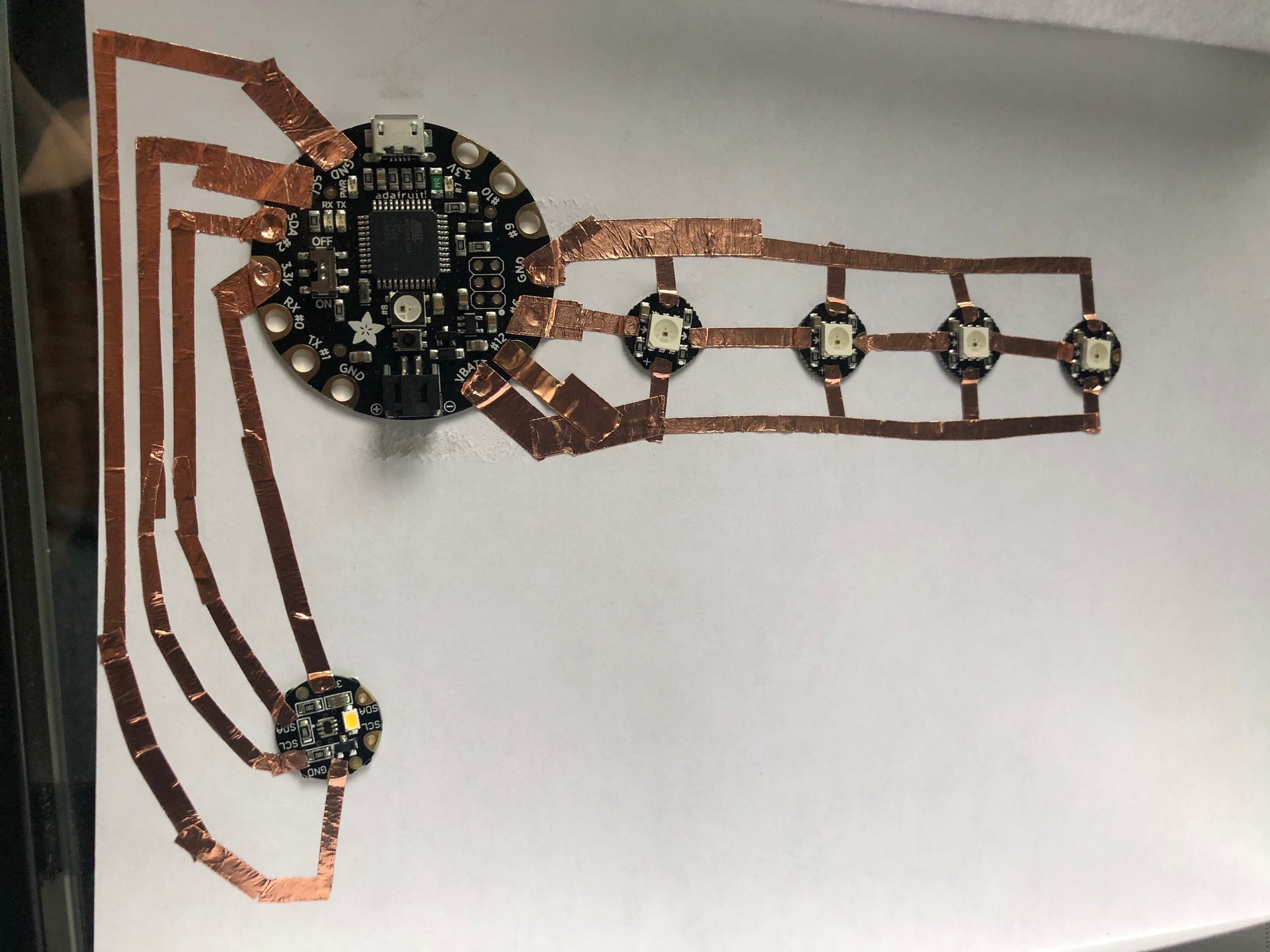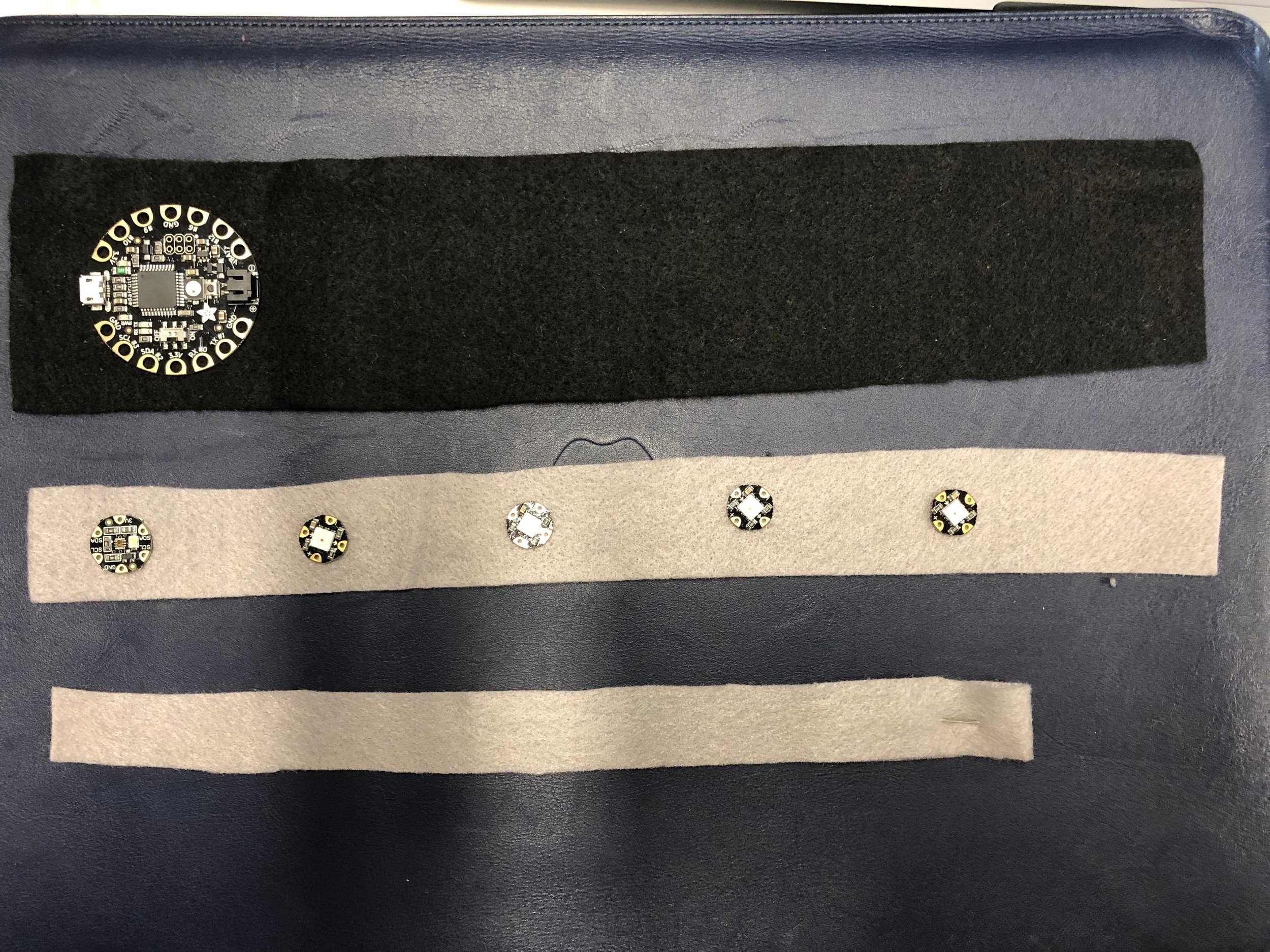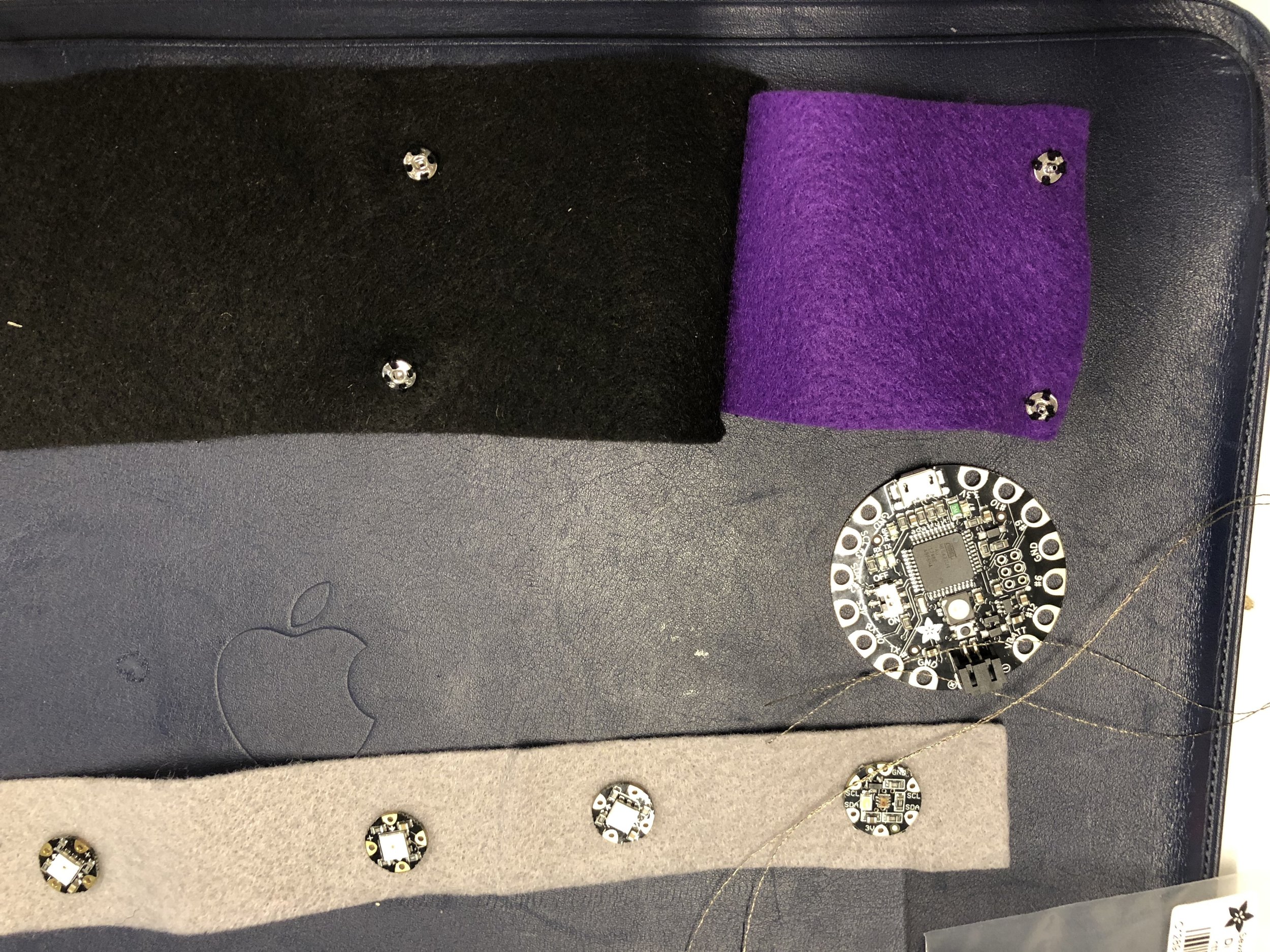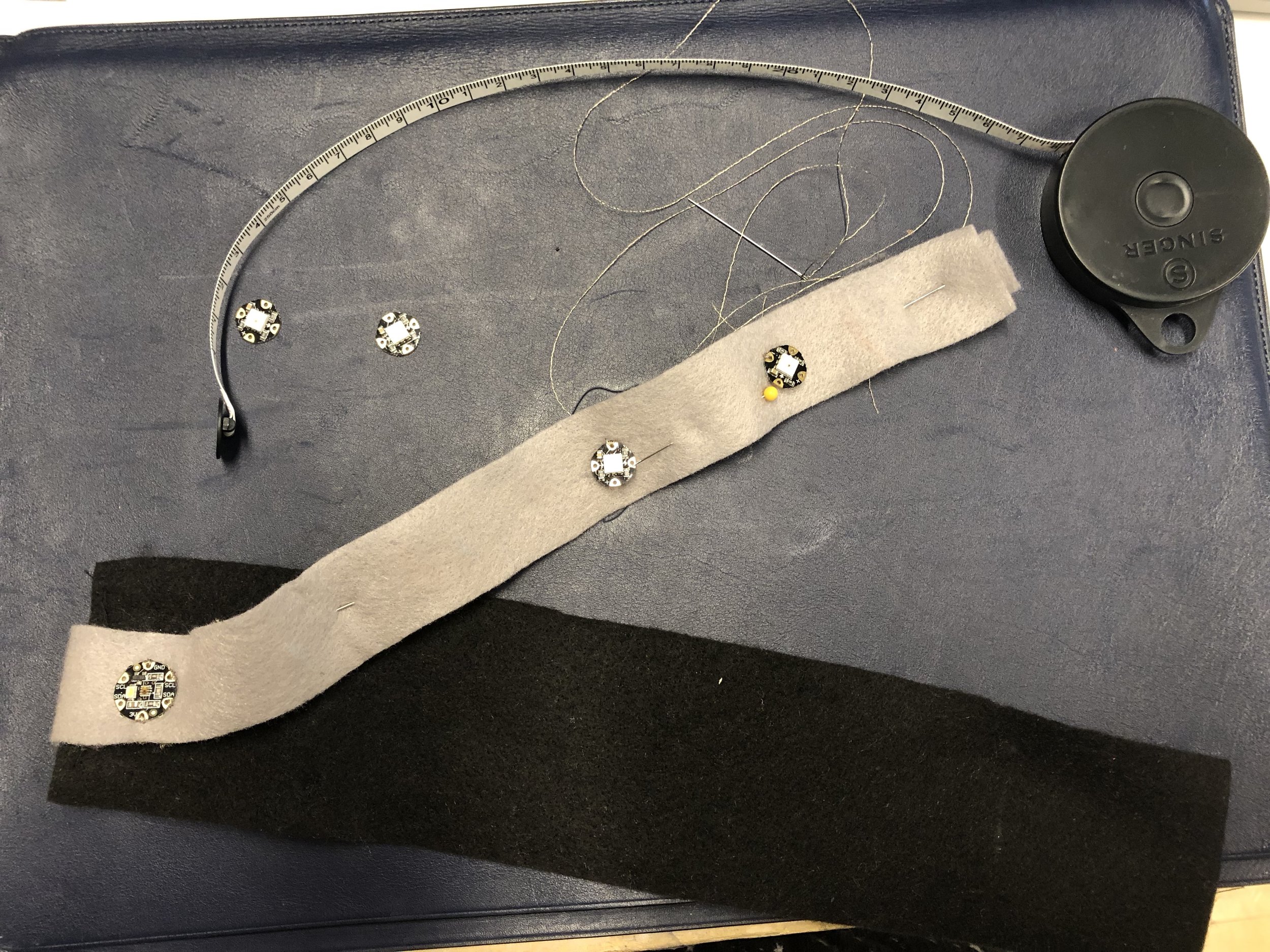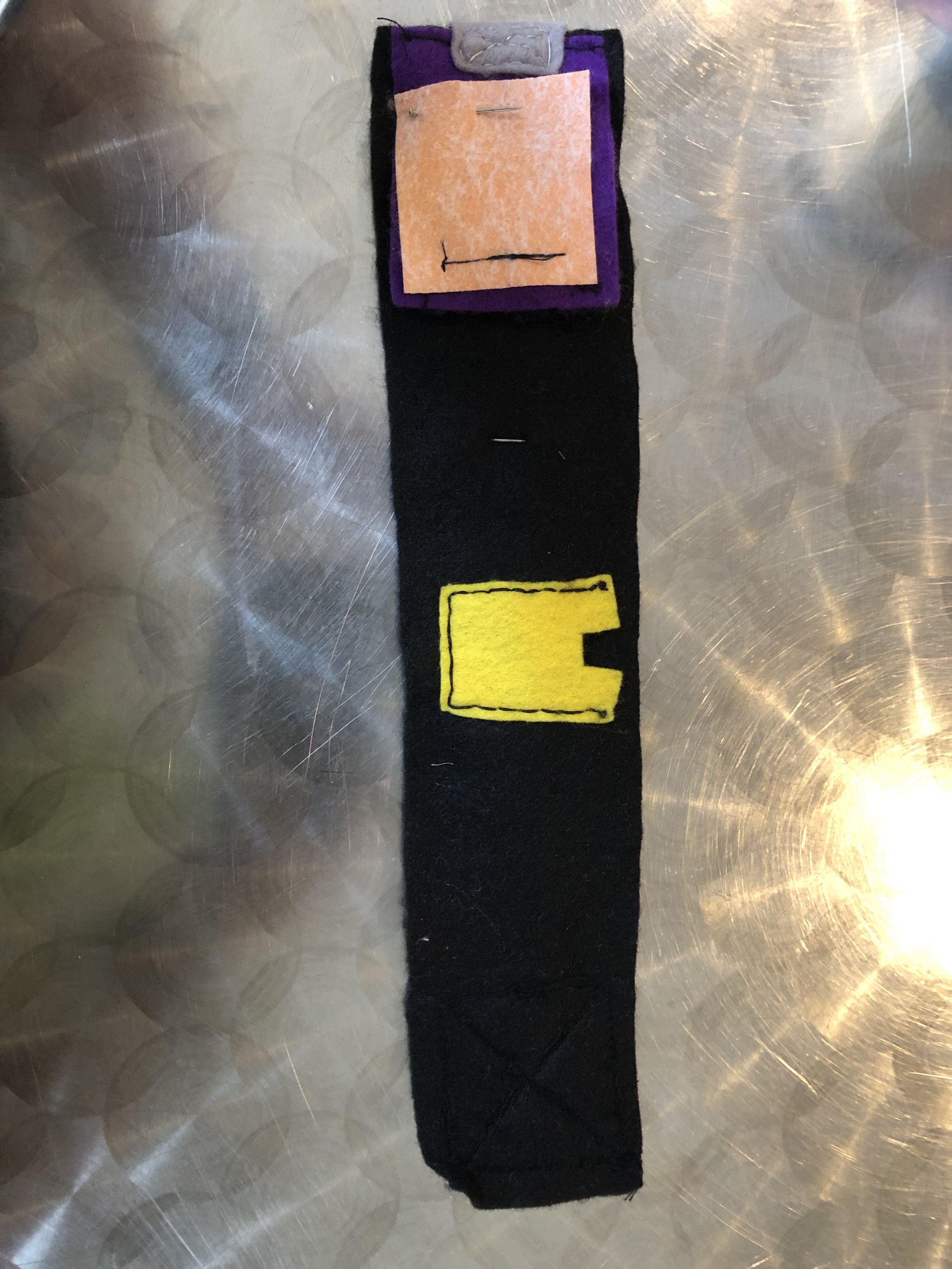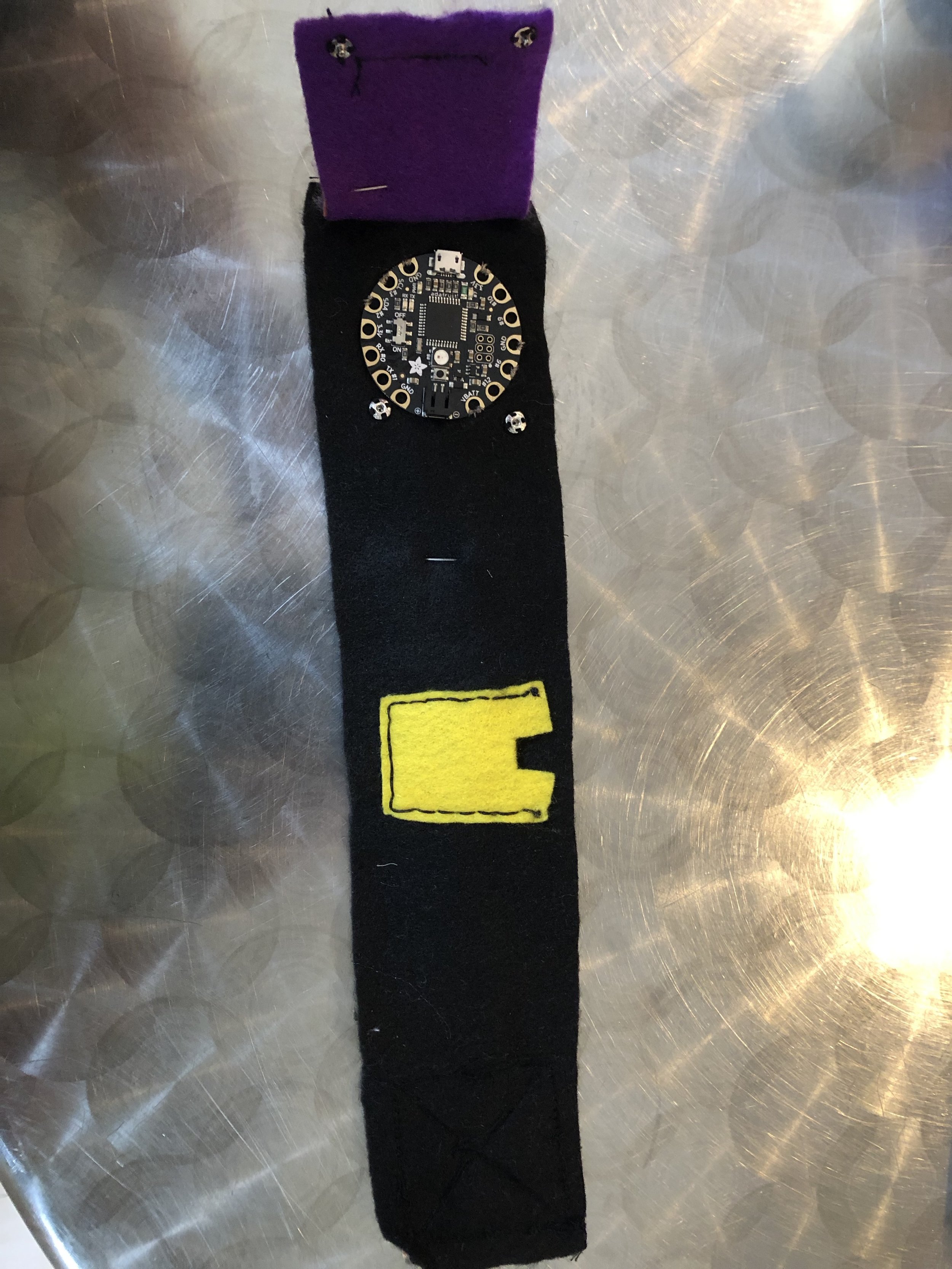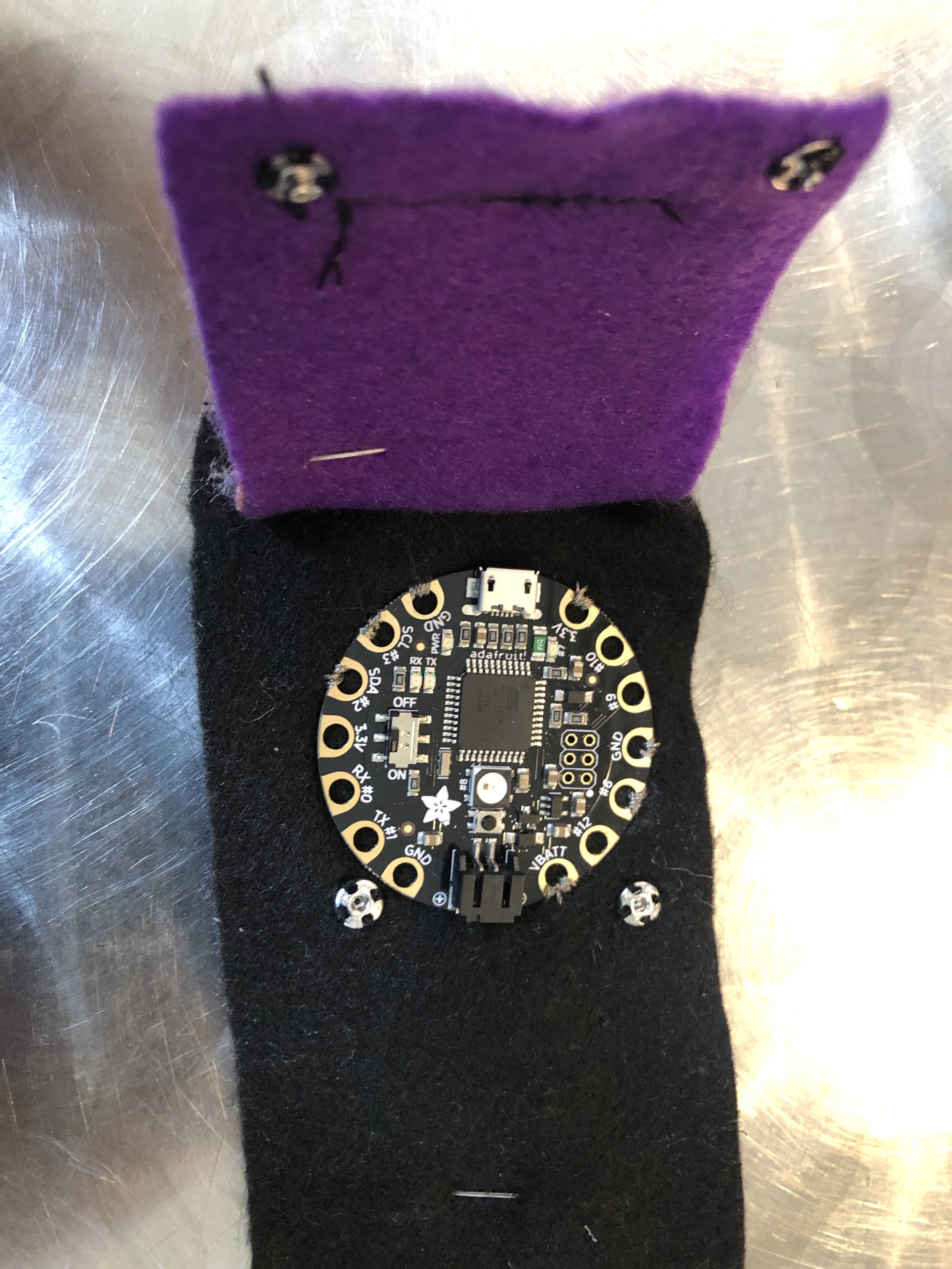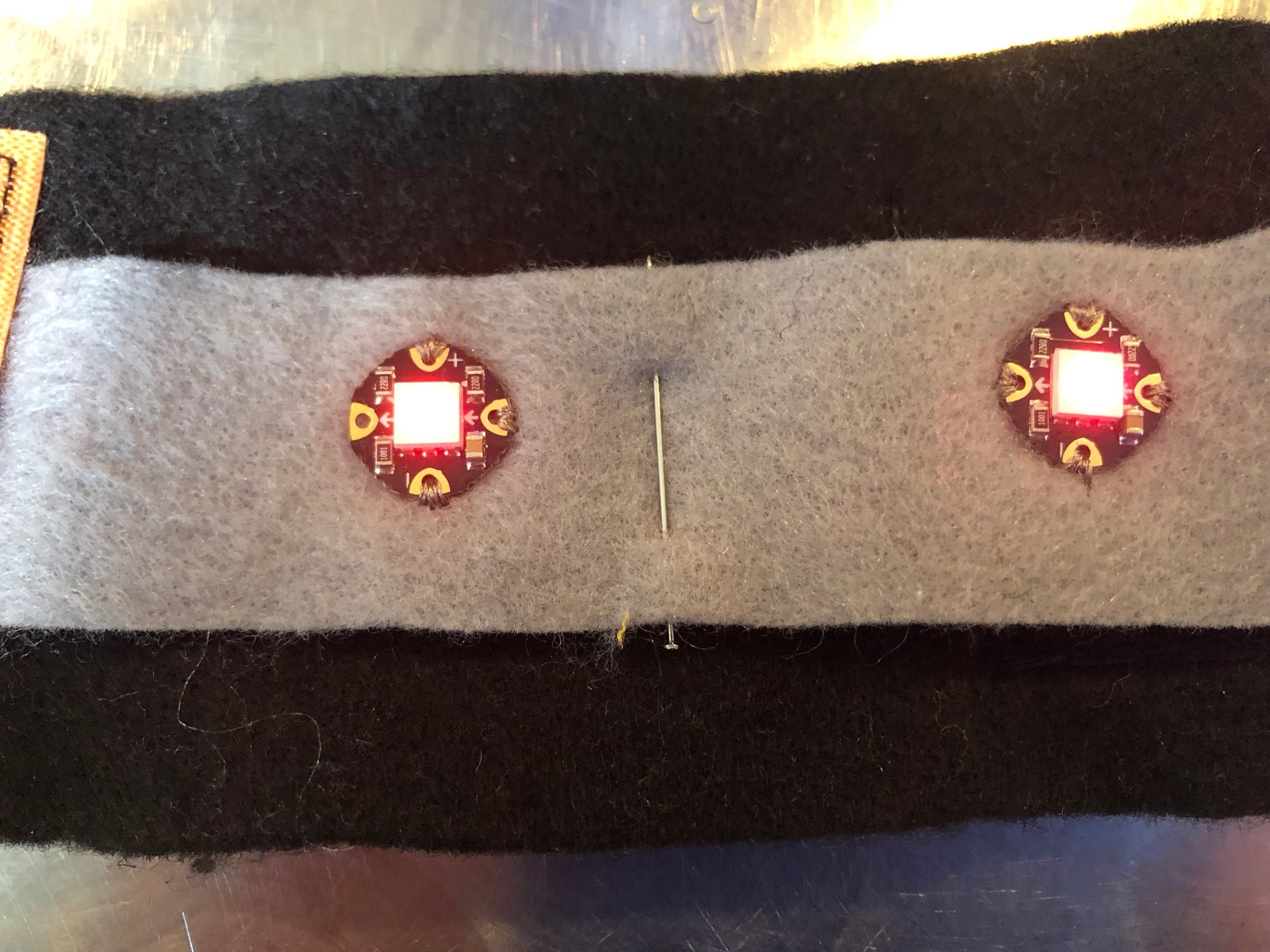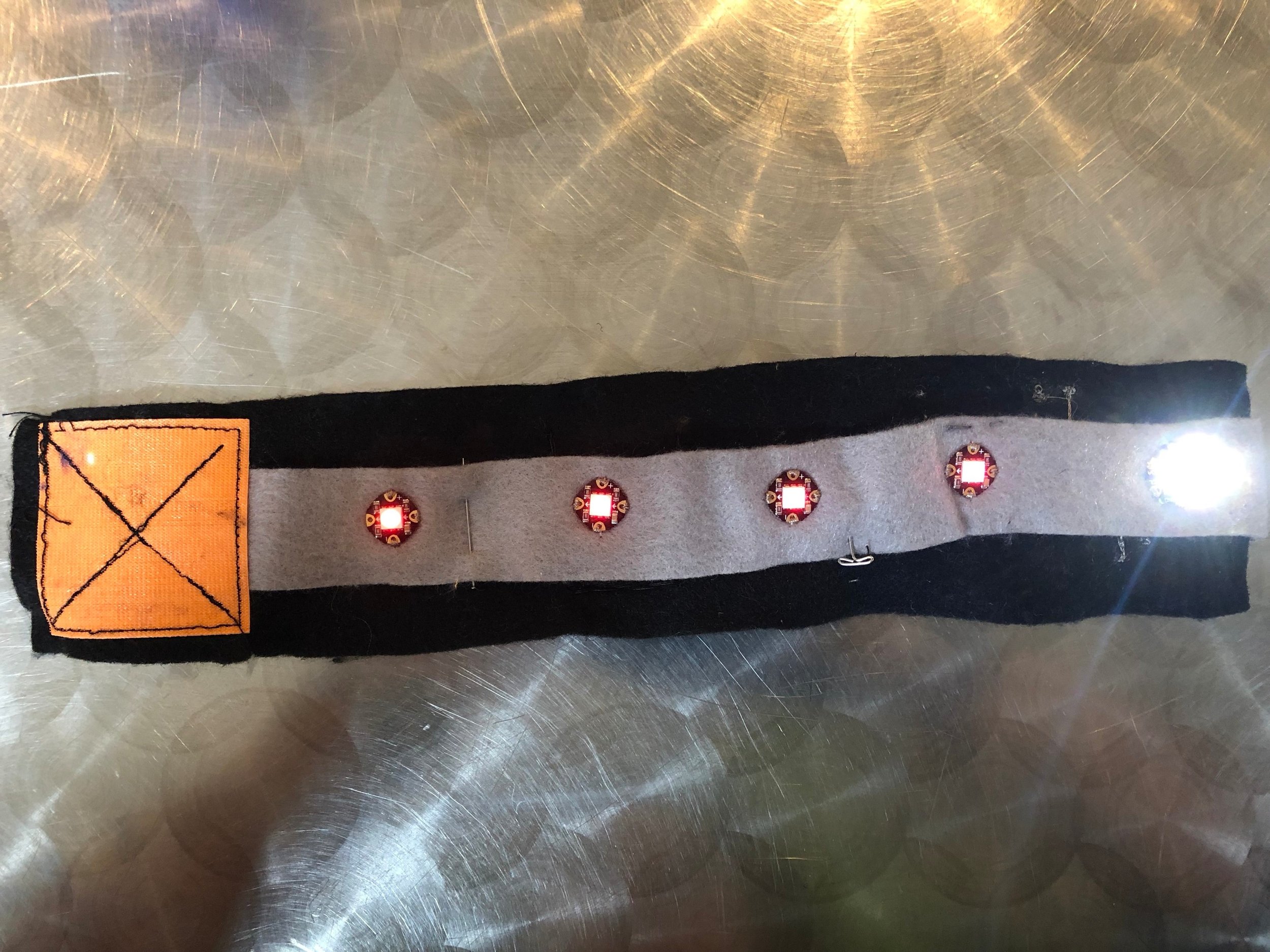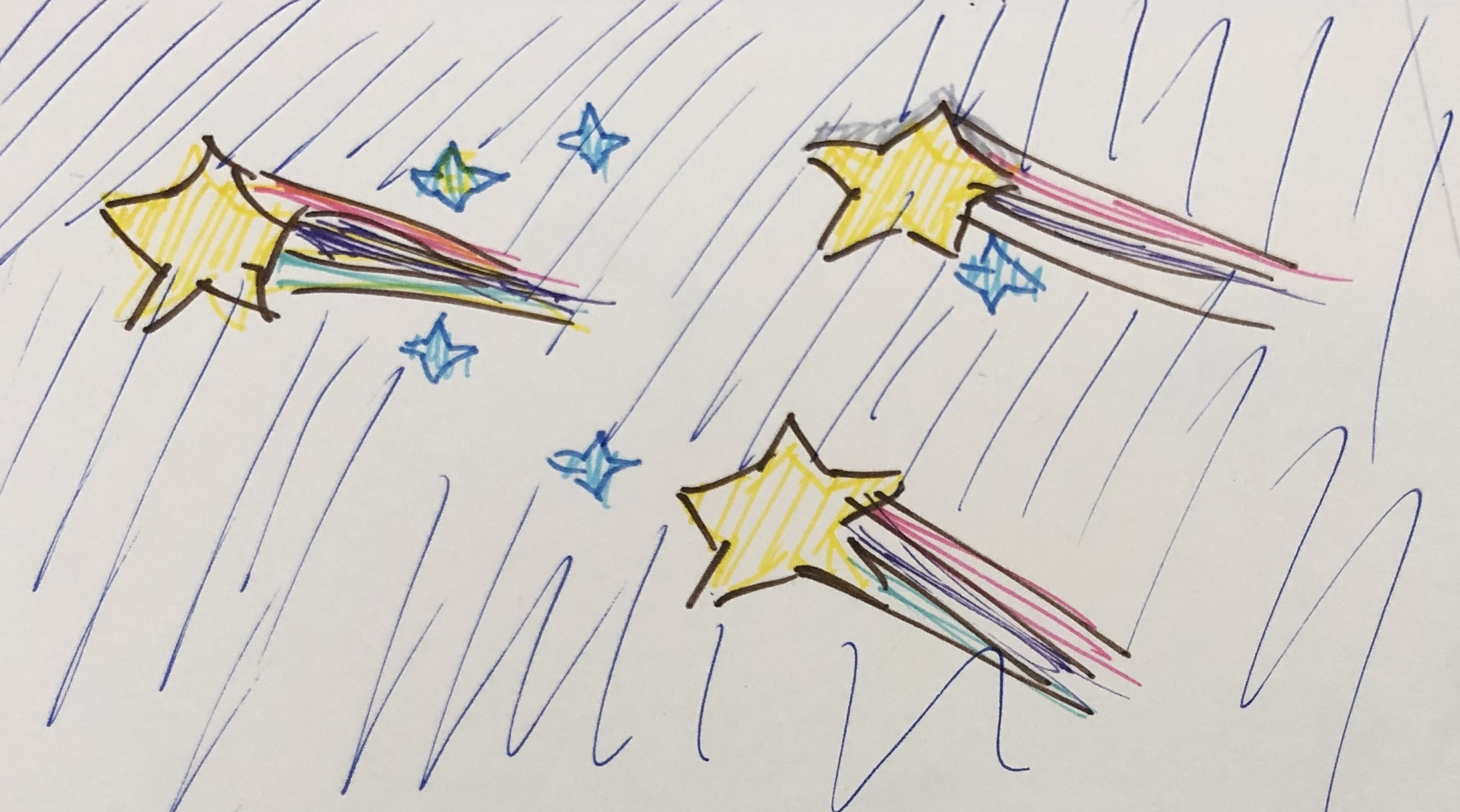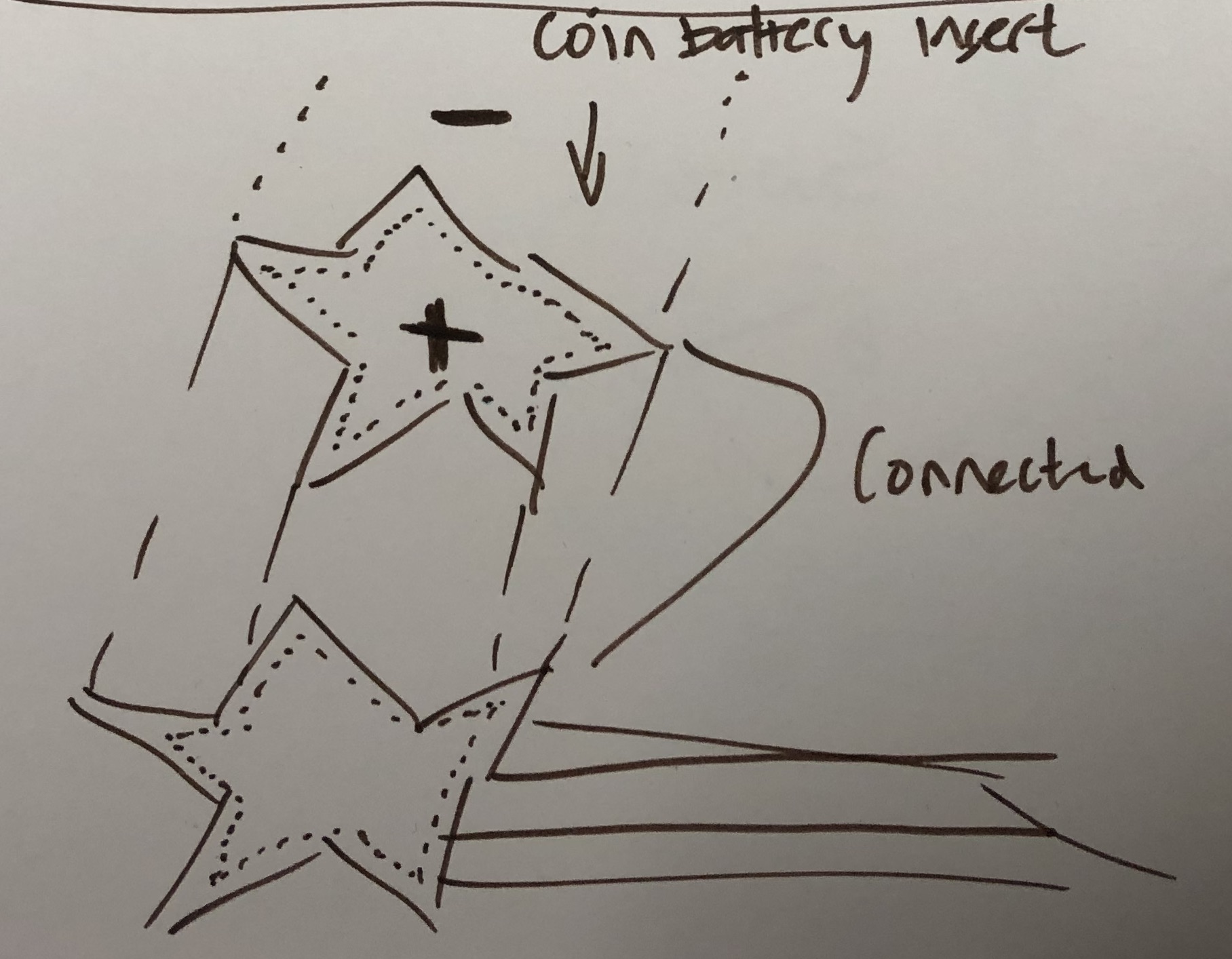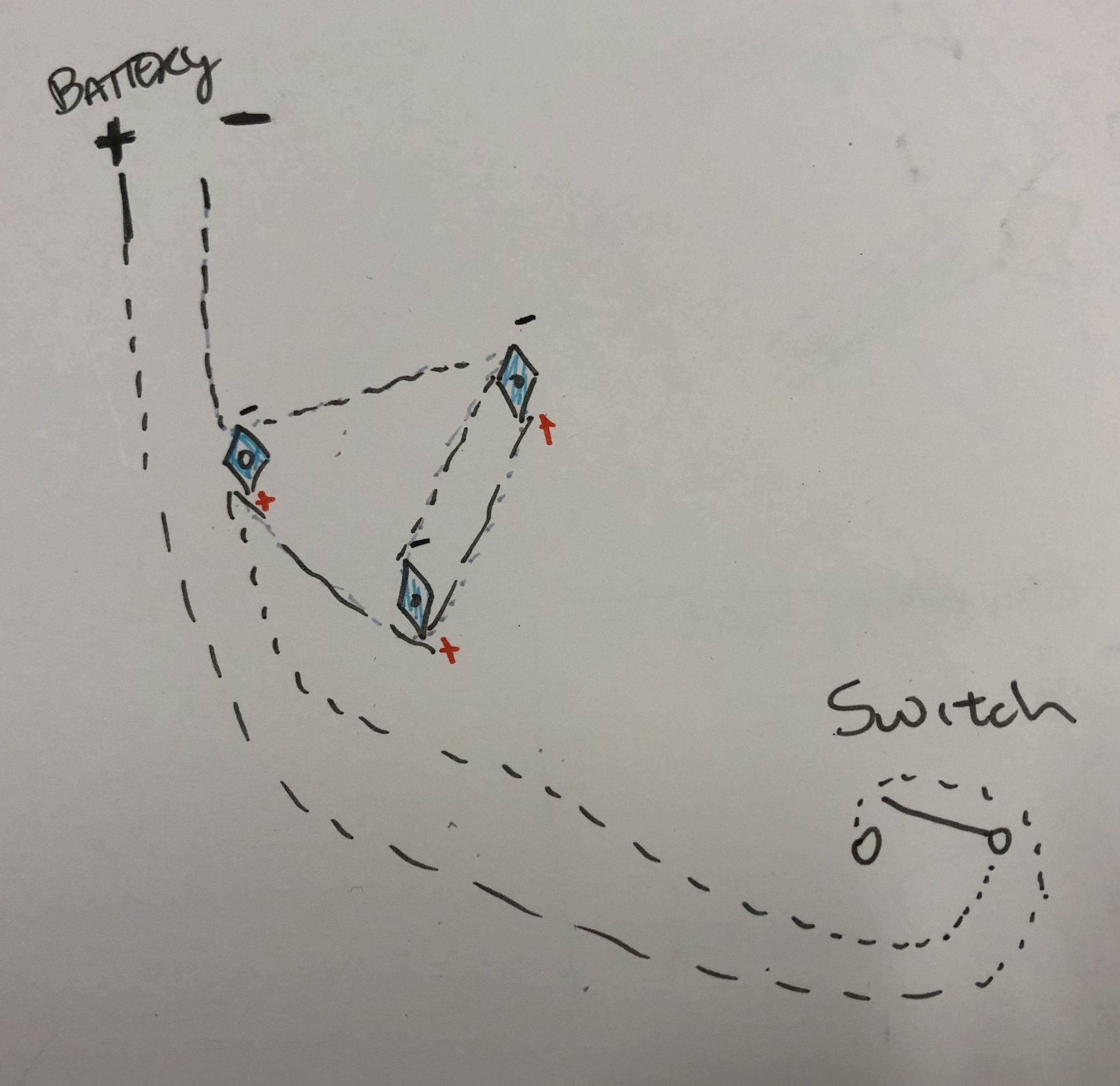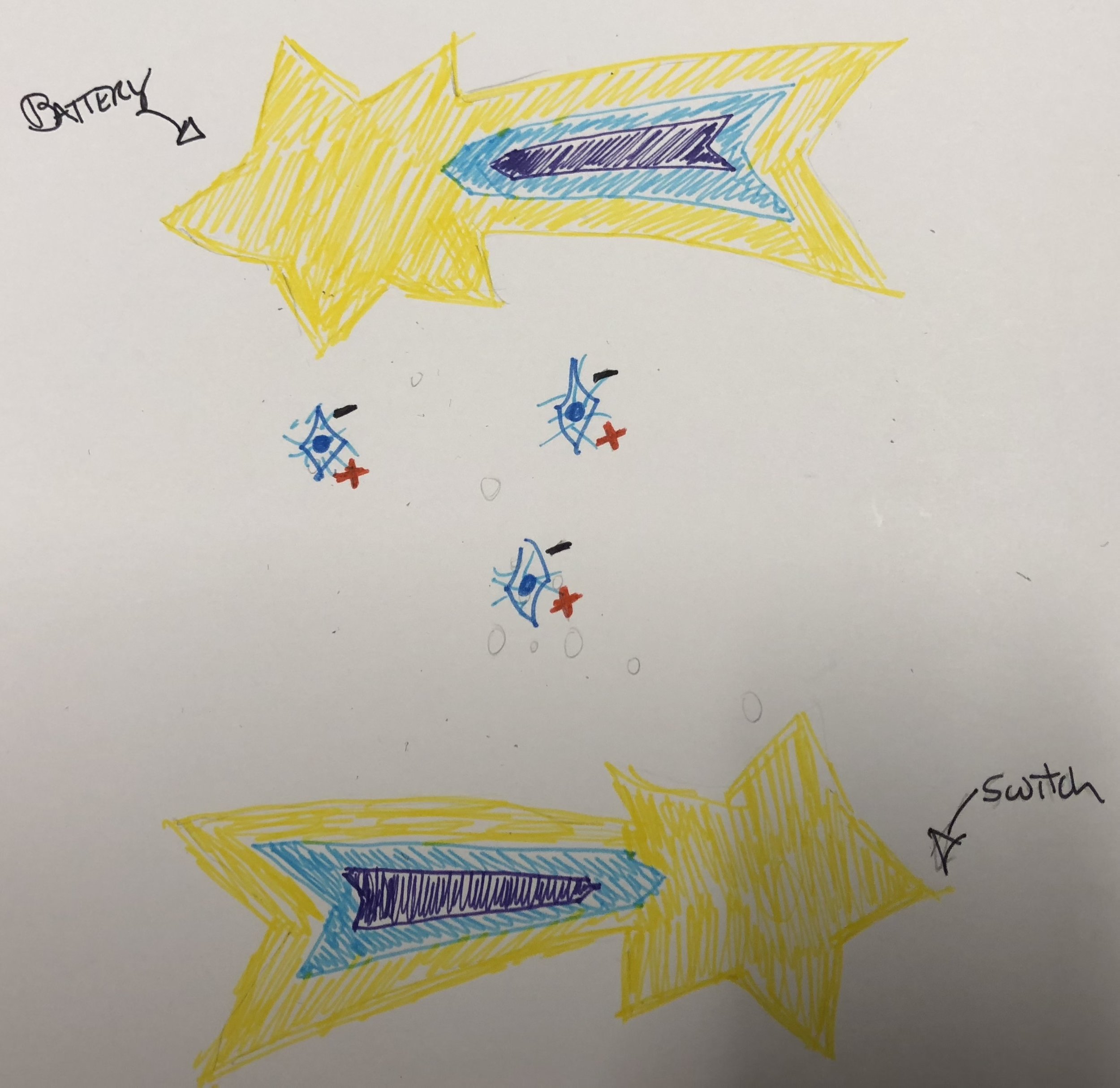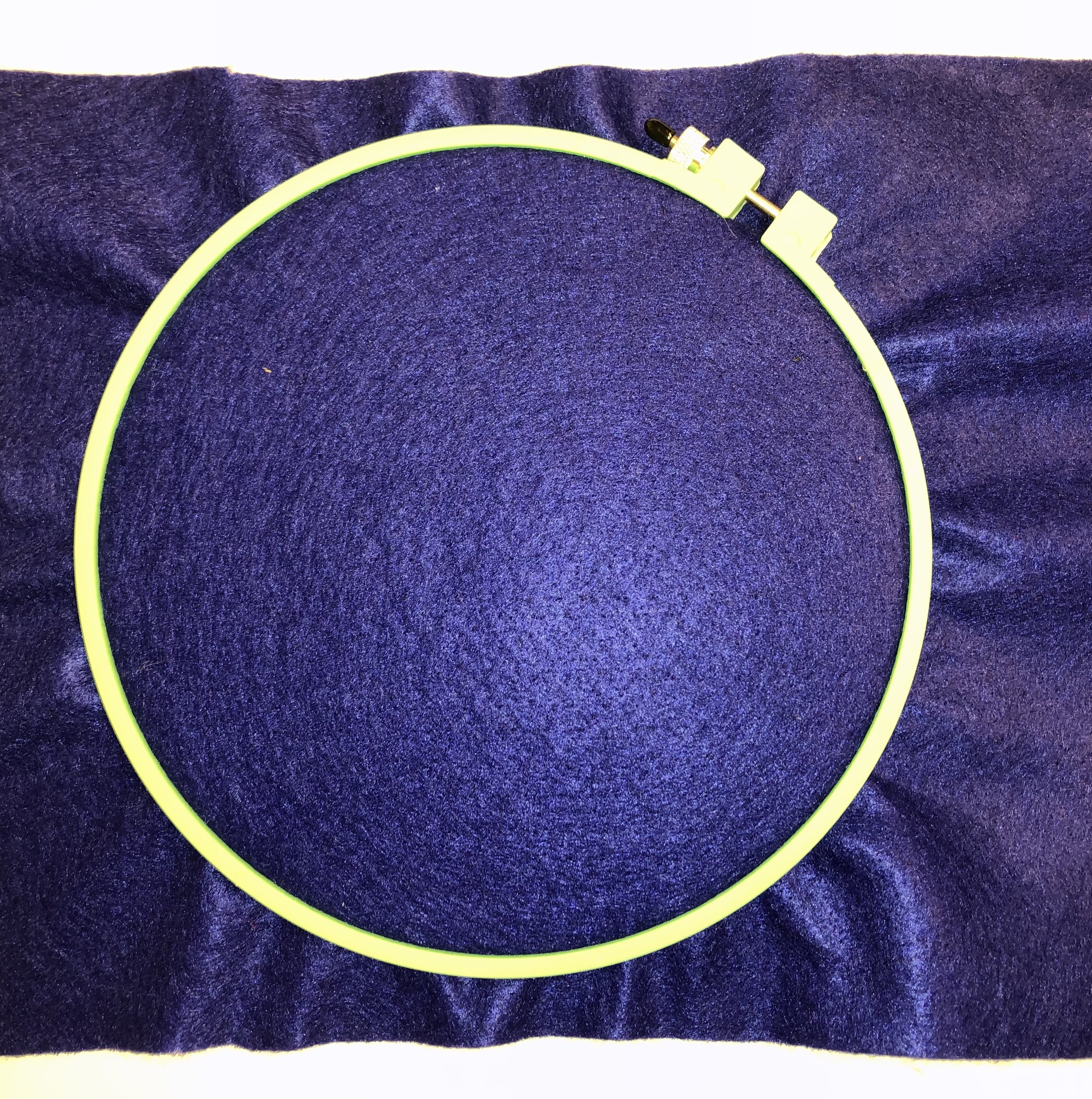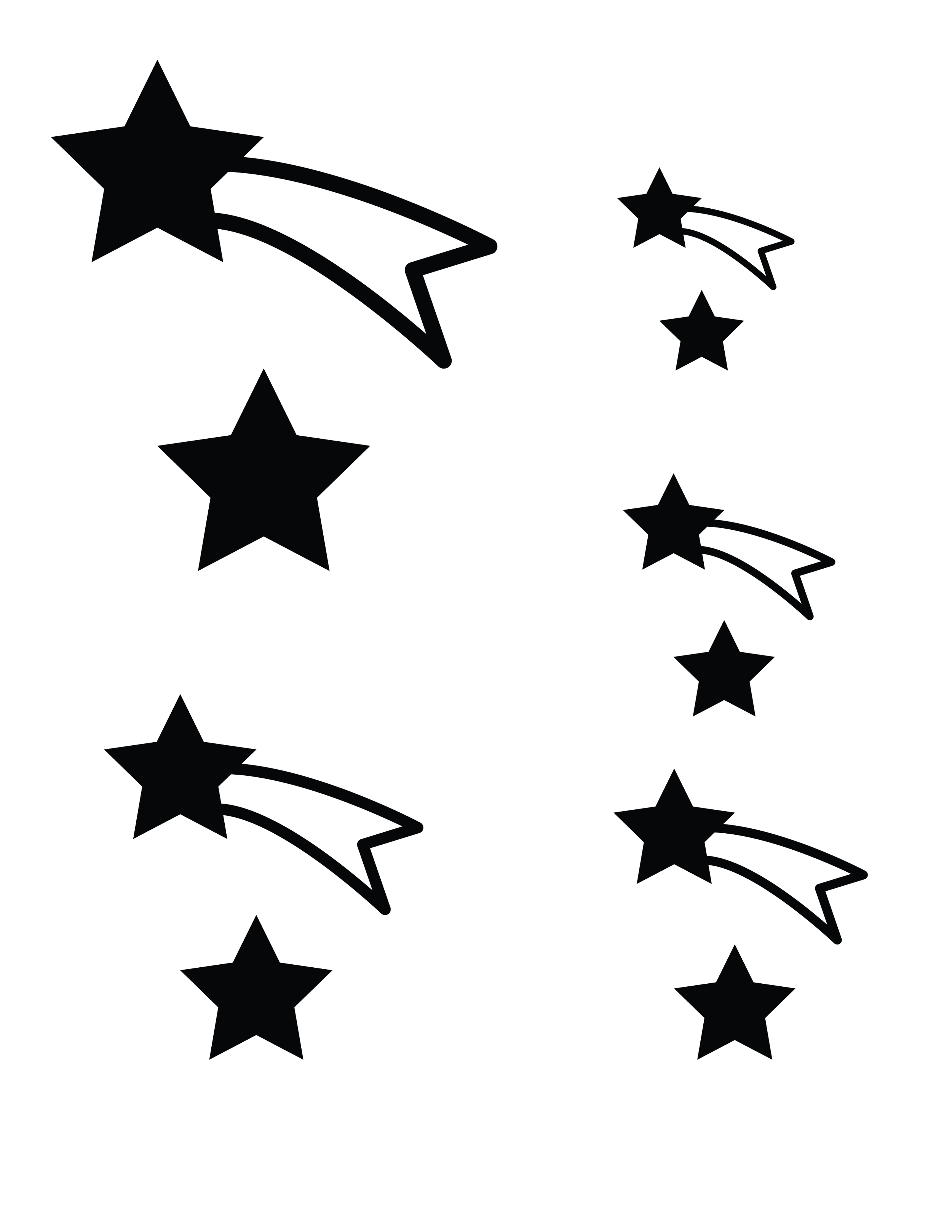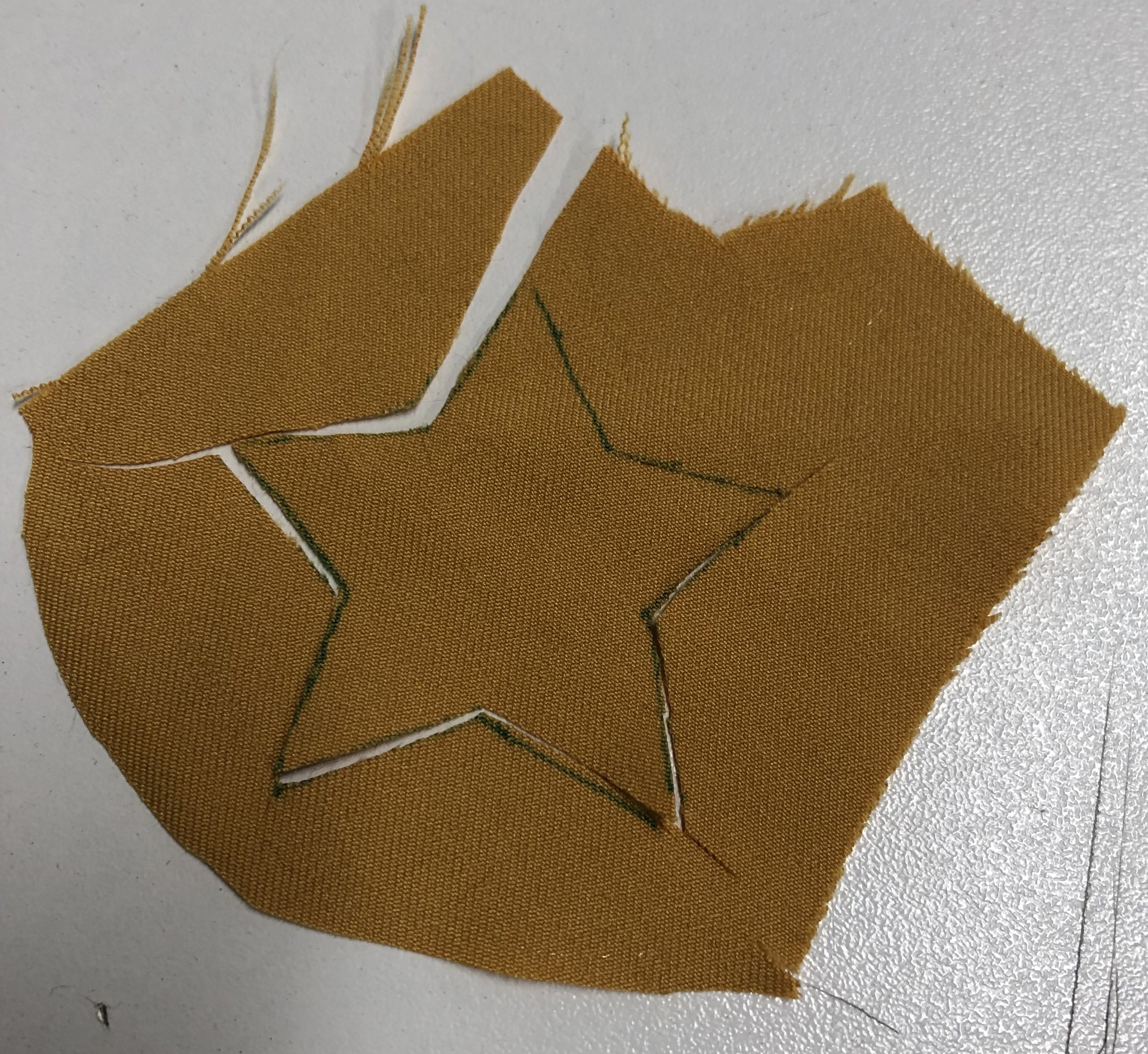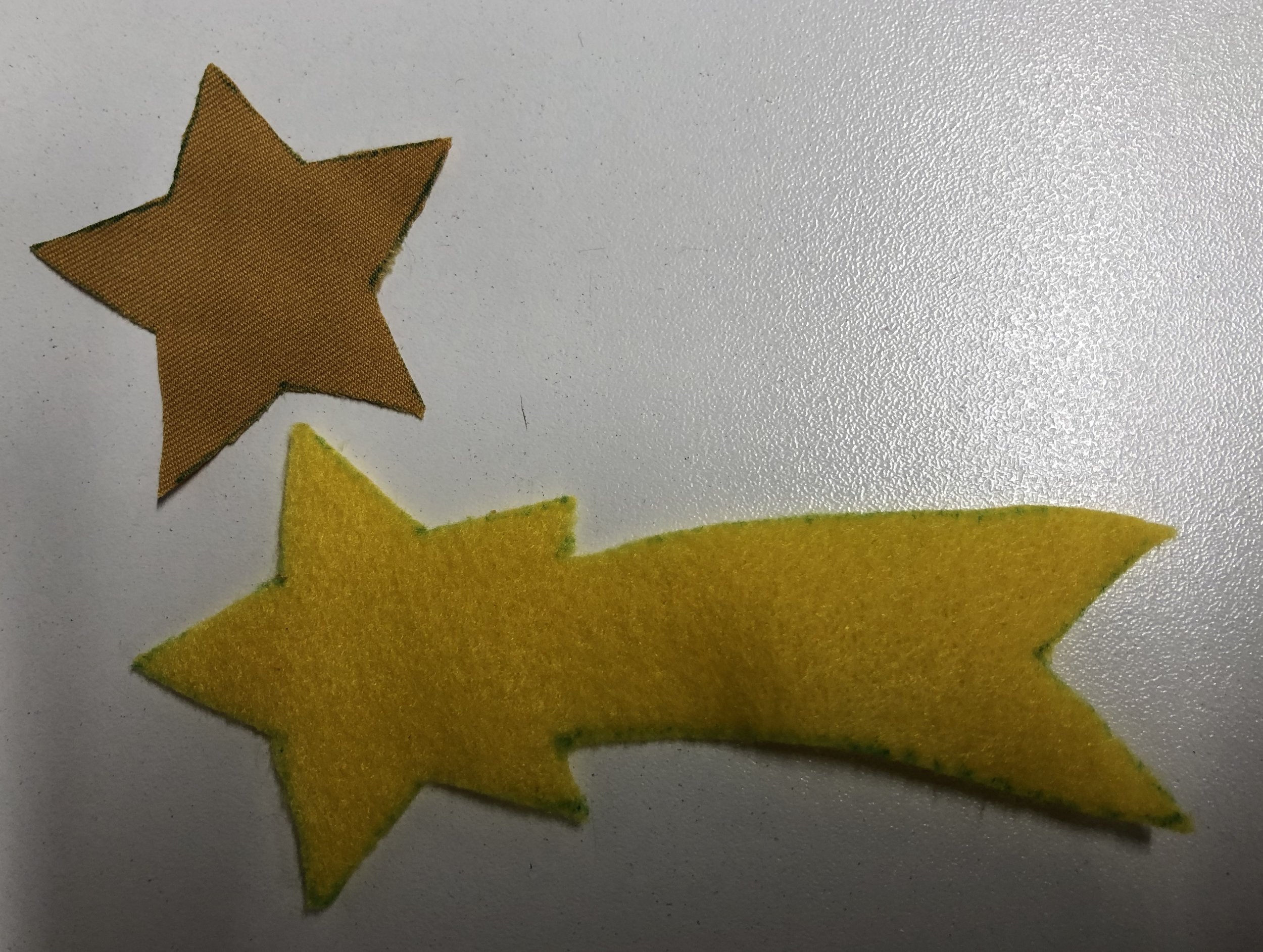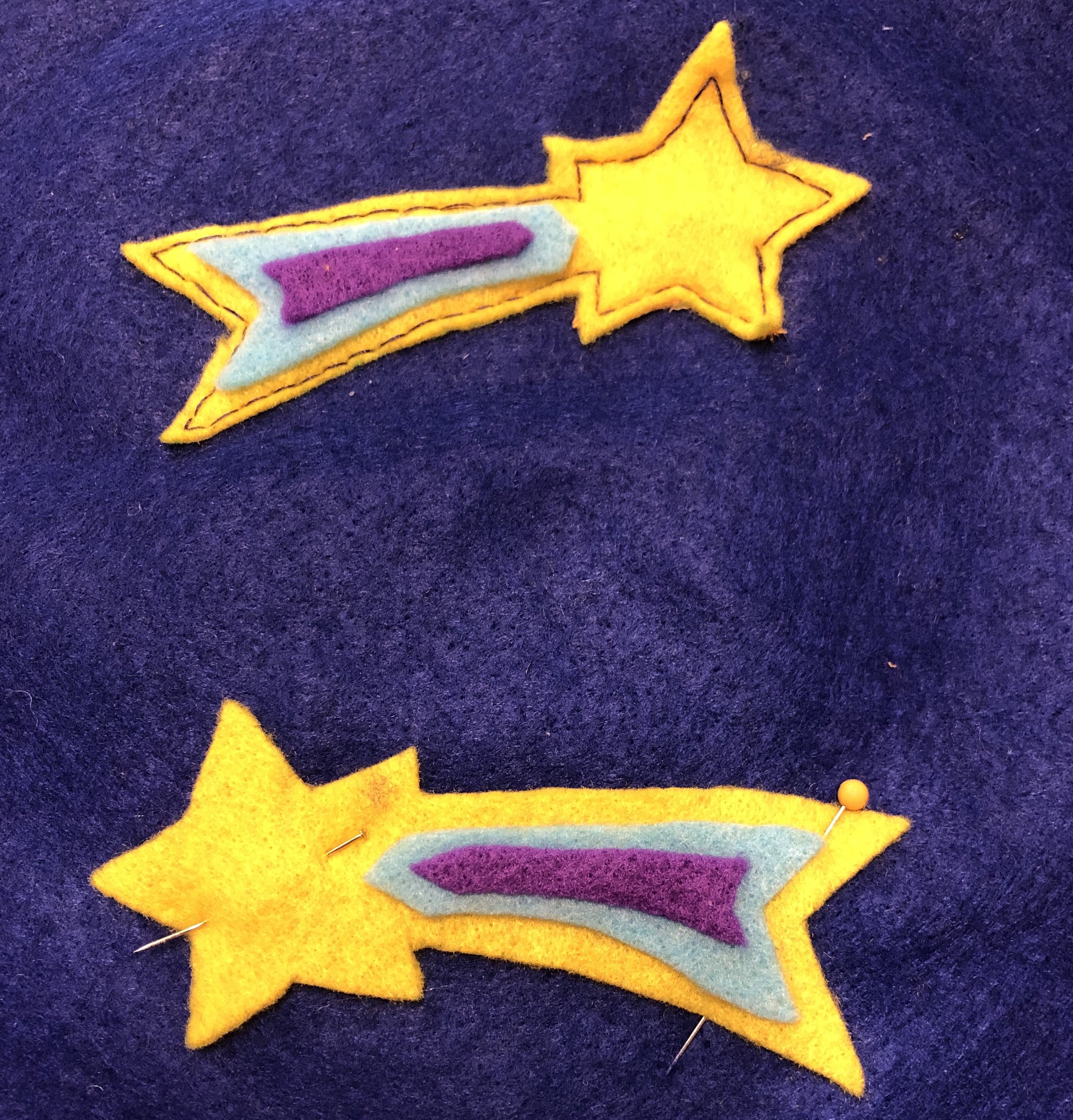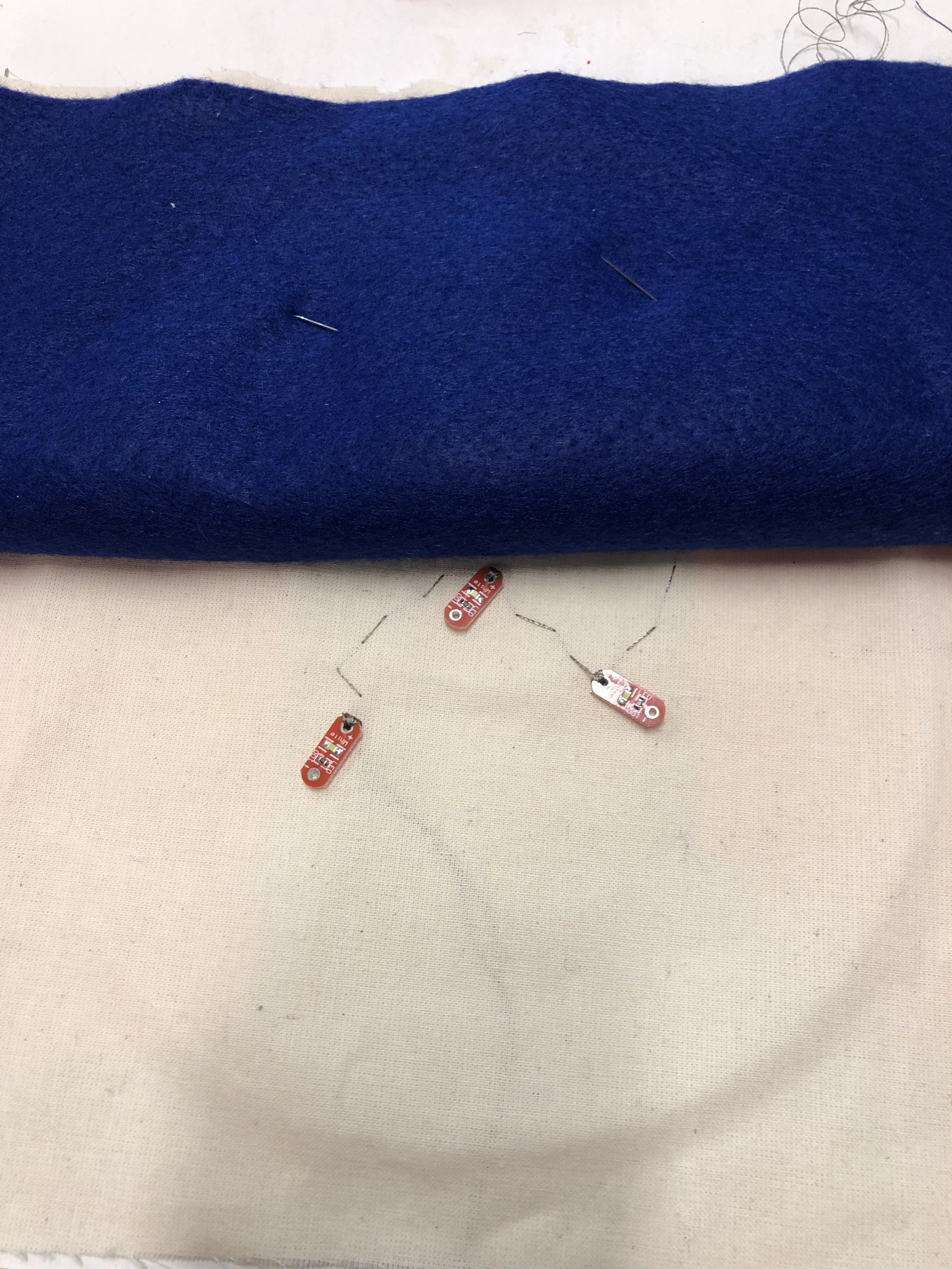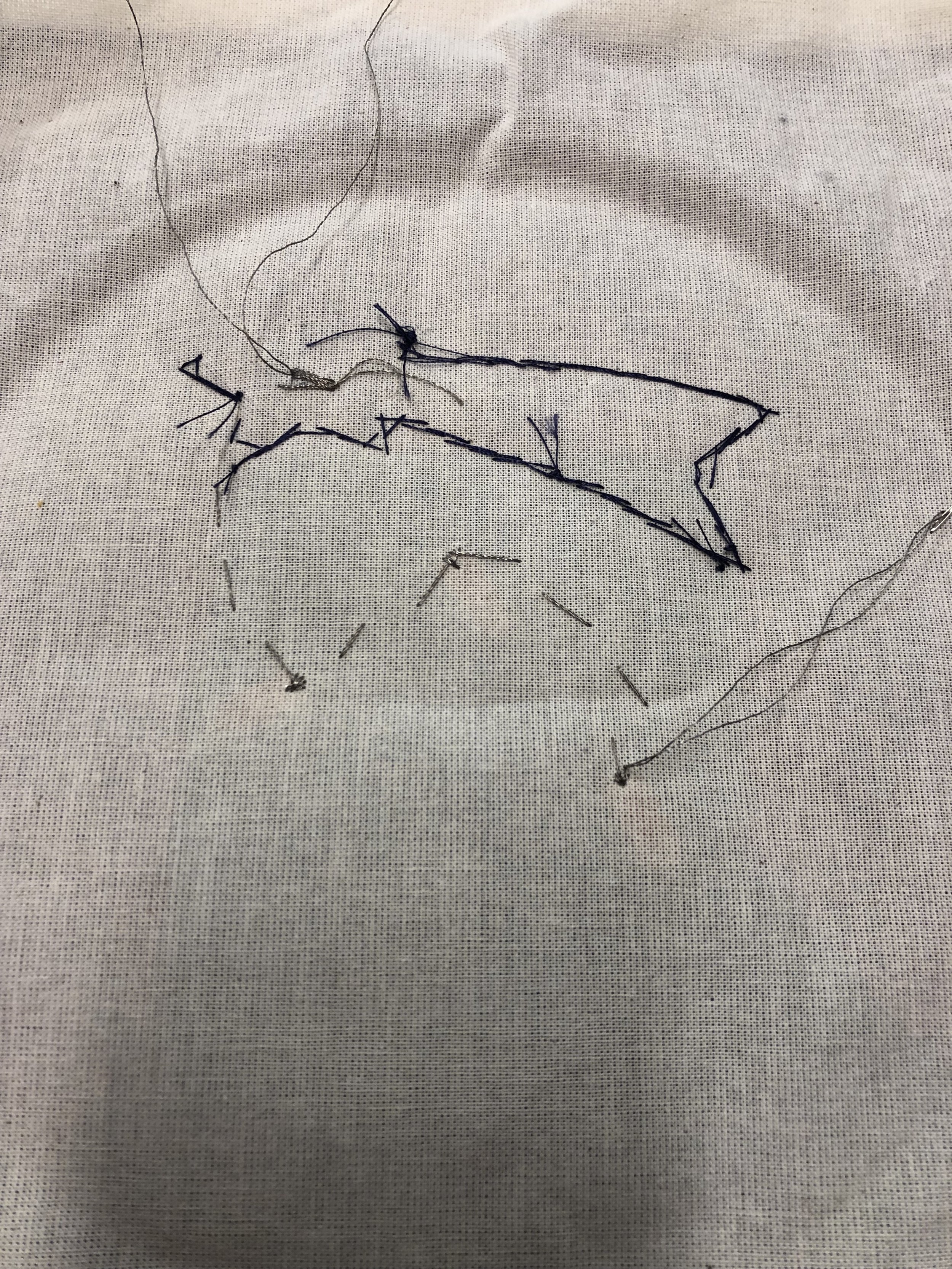This week in class we discussed what makes a ‘wearable’ a ‘wearable’ and basic principles that correlate to fashion. Part of this weeks’ assignment was to watch the Documentary ‘The Next Black’, which explores the future of sustainable clothing, fabrics, and wearable technologies. This film was very captivating and I most enjoyed the different interwoven ‘technologies’ that are in place and are currently being introduced at this time.
From the futuristic engineering and collaborations of Studio XO in London, I saw this concept of play that isn’t represented within every day culture — most likely due to the project difficulty, engineering time, and overall practicality — that is so whimsical and special that it creates that pause that makes us pay attention to the depth of the creation. The spotlight of this group was centered on the famous bubble machine that Lady Gaga wore as she left venue The Roundhouse following a performance as part of the iTunes festival. This spectacle was magical and heavily designed and engineered to create the desired experience of awe. I find this creation and others like it part of the overlooked element of surprise — it is too often so that we are so caught up in our ‘what’s happening next..’ that we fail to see what’s in front of us. I want to create moments like this. The awe-inspiring pause that’s so precious, we often miss it.
In Germany, Adidas is changing the game when it comes to tracking athletic performance through wearable devices in both the professional Football clubs and the MLS in North America. They have created a device that has a sensor fitted into the uniforms or gear that the players wear and is essentially able to determine athletic performance like speed, acceleration, power, distance, and heart rate of the player. After collecting all the crucial data, the device sends it to the coach instantly, allowing them to monitor the performance of an individual player, and learn about possible concussions or injuries. In the documentary, Matt Hymers discusses the complexities and testing of the devices as well as downfalls with working with Athletes in creating a performance device that does not affect the performance of the athlete — essentially the goal is to create a monitoring device that does not distract nor hinder the athlete in any way. Unfortunately, the process of creating these devices has taken a toll on Adidas and they have since halted their production of and creation of wearable devices.
BioCouture in Brooklyn, NY is the world’s first biodesign consultancy, working to produce clothing without generating toxic waste. The documentary highlights the work of Suzanne Lee in creating a textile made from bacteria. As stated in the project, the process of creation is similar to that of creating beer — it is a chemistry experiment in a way, using a new method for textile creation in a way that is not harmful to our environment and is apparently long lasting and sustainable. The fact that it becomes odorless after some time is pretty amazing, and I would be inclined to wear these products due to the sustainability, technology, science, and overall appeal of the story. There’s so much that goes into this project, and I find that there’s an element of pride that would be owned — it’s also a conversation starter, which leads to connection (inherit human need) and for that, definitely in the right direction!
Patagonia my be the pinnacle of sustainable practices in the industry as they encourage responsible consumption and incentivize recycling in the clothing industry. Rick Ridgeway discusses Patagonia’s practices in marketing and customer services and how they focus on sustainability through encouraging the consumer to only purchase and use what they truly need. Rick mentions in the documentary that manufactured goods have more of an impact than farming with the types of technologies that they use - in fact, they cannot make clothes that are climate neutral or climate positive, but can absolutely make clothes that have an impact on climate change. In addition to this video, I find Patagonia a truly remarkable and utilitarian brand (I own many pieces) that focuses on the greater account of impact on the planet versus their bank accounts. Recently, Forbes published an article on the extra $10 million in profits they earned this year from “Trump’s irresponsible tax cut” that they will donate to grassroot groups fighting climate change, including organizations that work in regenerative organic agriculture to help reverse global warming instead of investing the additional dollars back into its business. This direction and method is so refreshing and seems to be adding a sustainable twist to the way businesses give back to the greater good of the planet. Patagonia also has a fix-it kit, allowing the consumer to get the most of their purchase. If something cannot be repaired by the user, they are also at the liberty to replace the item and will recycle the old materials for other products.
One way that the fashion industry is polluting the earth is through the process of adding dyes to our textiles through water — this wastes nearly the equivalent to half the Mediterranean sea every year. The YEH Group has focused their attention on the quality of dyes and reduction of water that goes into the production of garments by choosing to only use fabrics that have a ‘dry dye’ process where not a single drop of water is used to dye the textiles. The technology uses a highly compressed gas known as super critical carbon dioxide to dye textiles — the process also uses 50% less energy and 50% less chemicals that traditional manufacturing. In the documentary, Sophie Mather — an industry expert in sustainable textiles — discusses the process and impact of the dyeing processes and the excitement and potential around using dry dye and other potential impact across different areas of future fibers to create something that only the future holds. The impact that this process carries can have bounds and leaps in progress for the textile industry. There are so many opportunities to pivot away from harmful solutions and aim directly towards the sustainable ways that will impact nature way in a less than harmful way.
The quality of fabrics and textiles has degraded over the years to the point that as as society we tend to go with the trends and buy and toss, rather than reuse or fix. The company iFixit is based out of San Louis Obispo, CA and shares a united goal of teaching and empowering all to fix what they own and get the most of what they buy. I personally have been using their ‘fix-it’ guides for over 10 years and have bought tools from their site in past years. The social and global impacts of repairing your own gear, rather than tossing it and throw it away is beyond comparable in some cases. I find fixing things to be something of an art and definitely worth so much more in the self-esteem category than most things. The site carries the repair guides for a variety of consumer goods and ranges from repairing your jacket zipper to your macbook. I’m a fan and will use their site as long as it exists!


